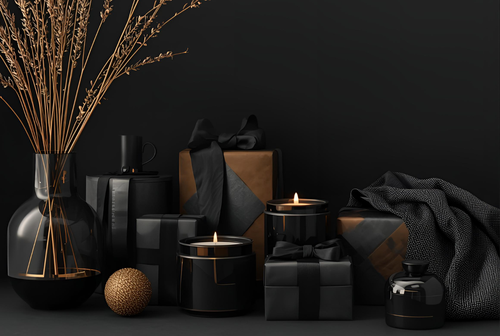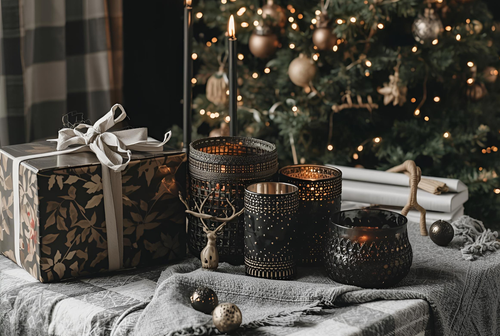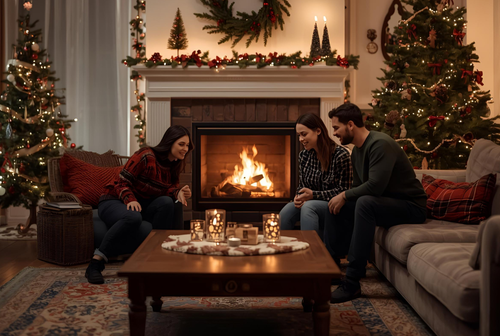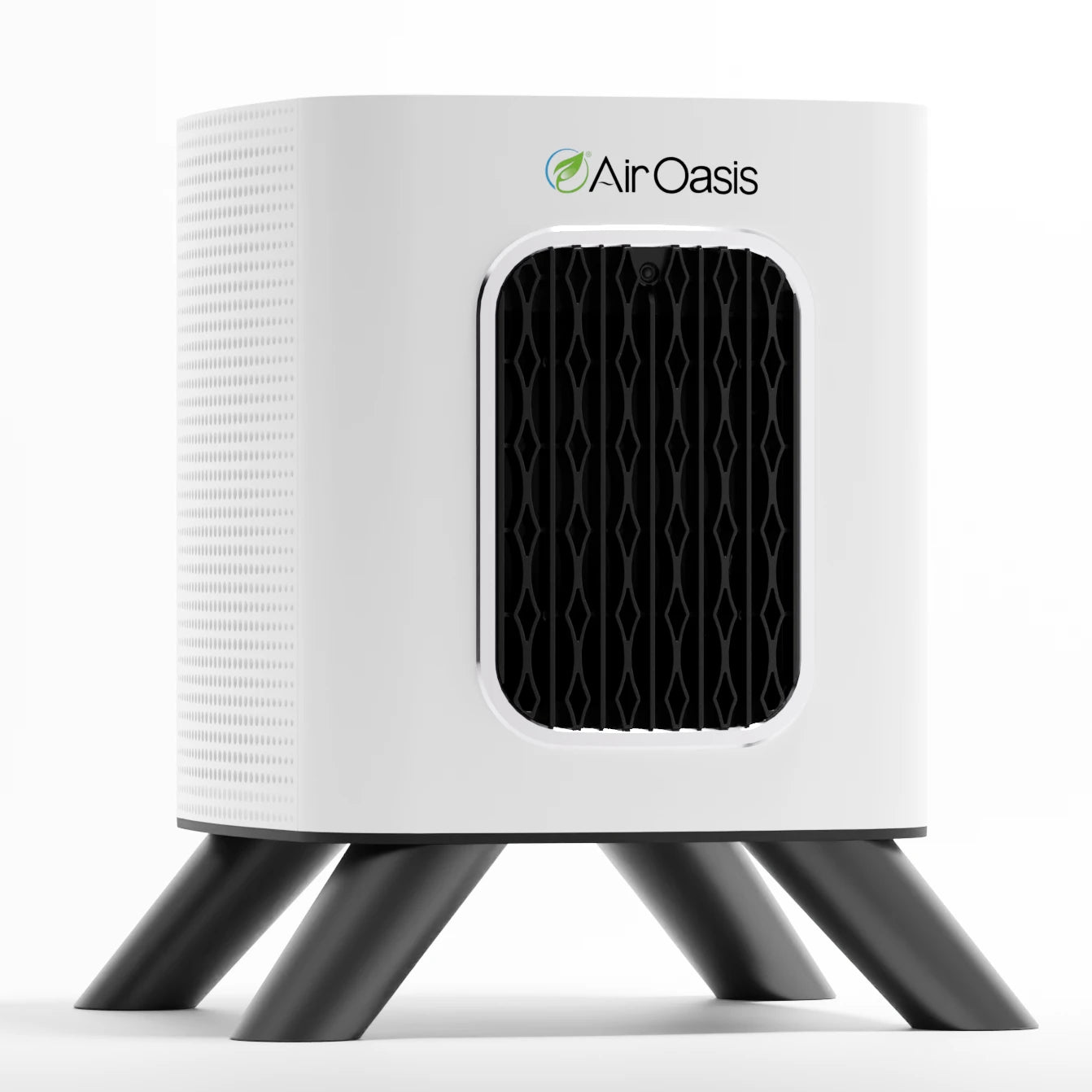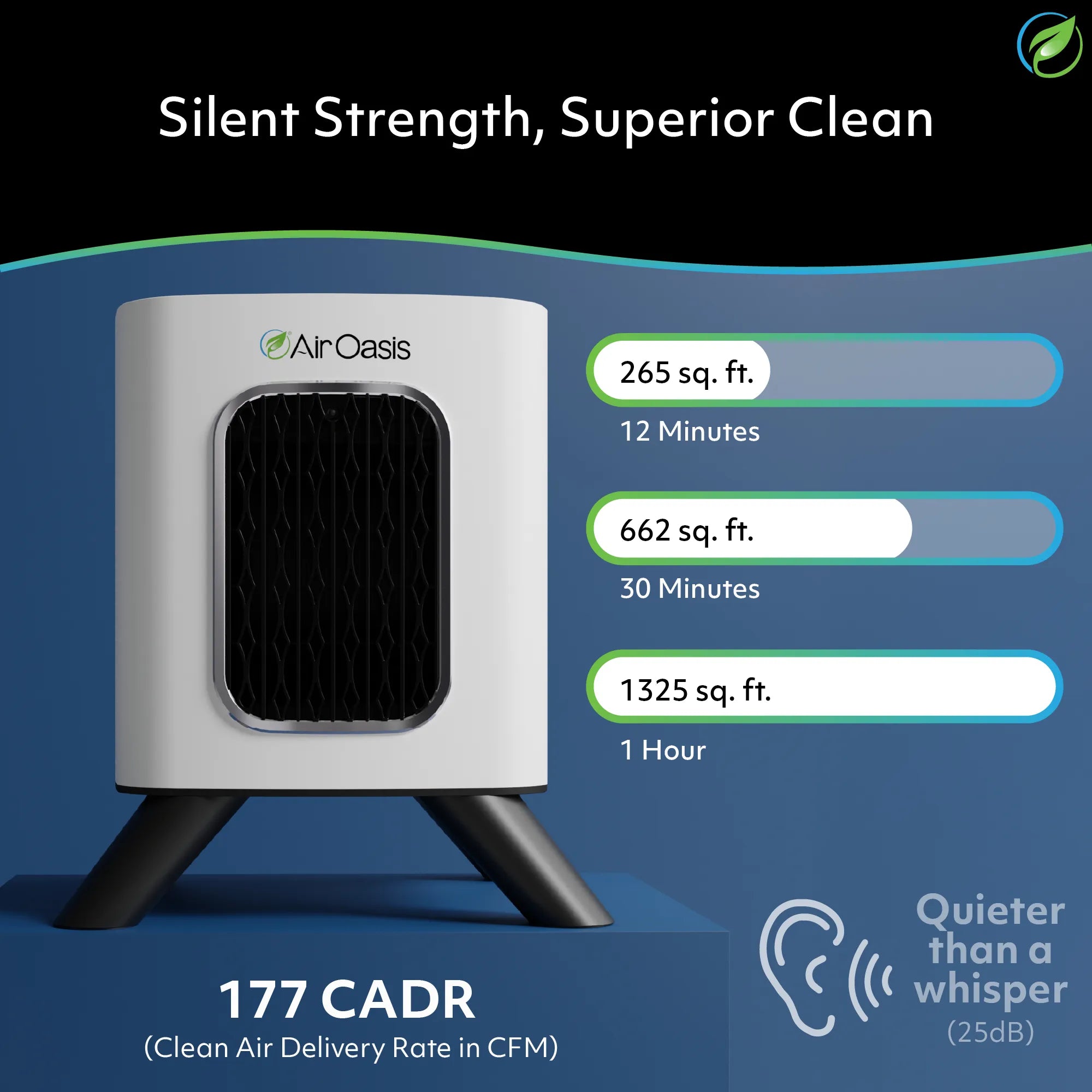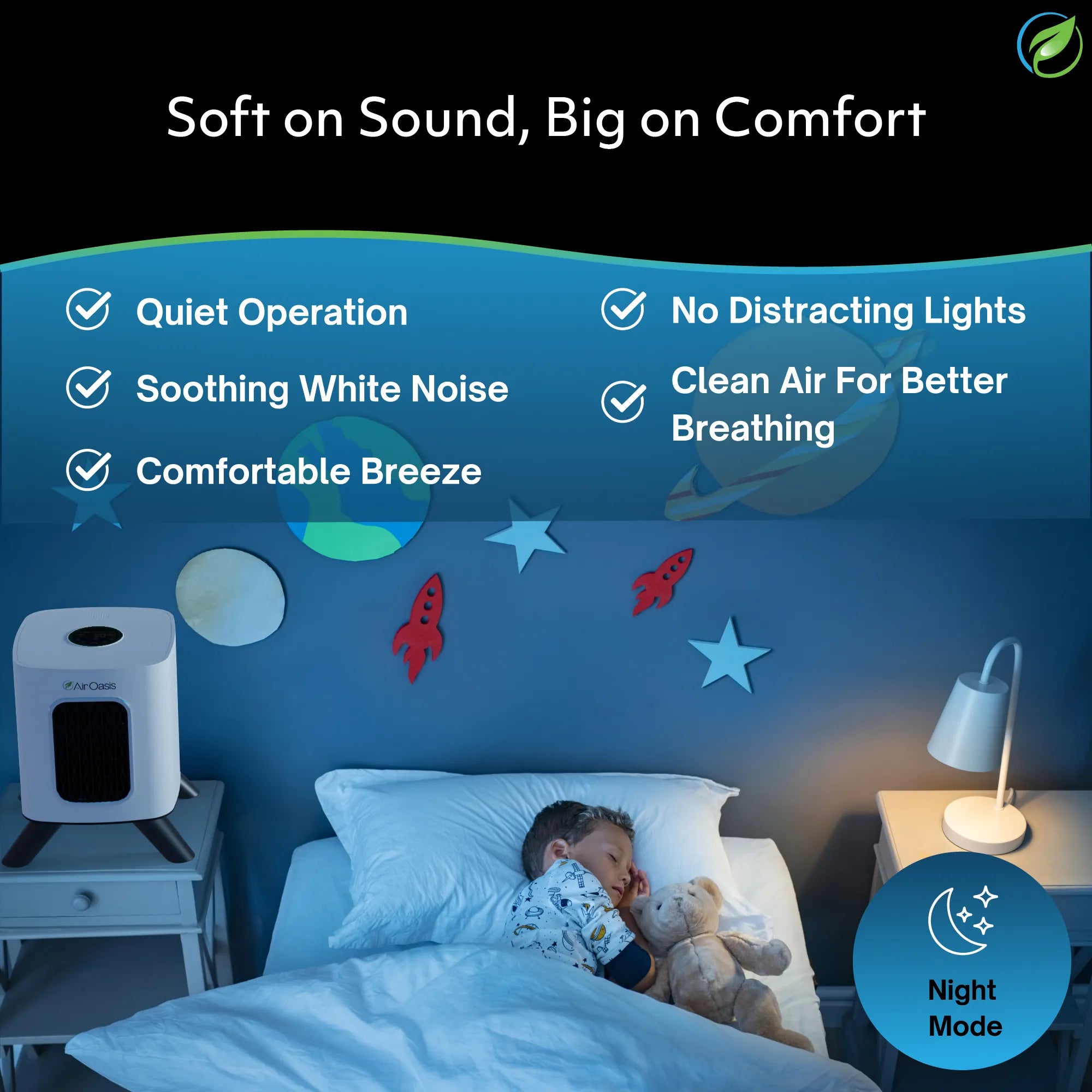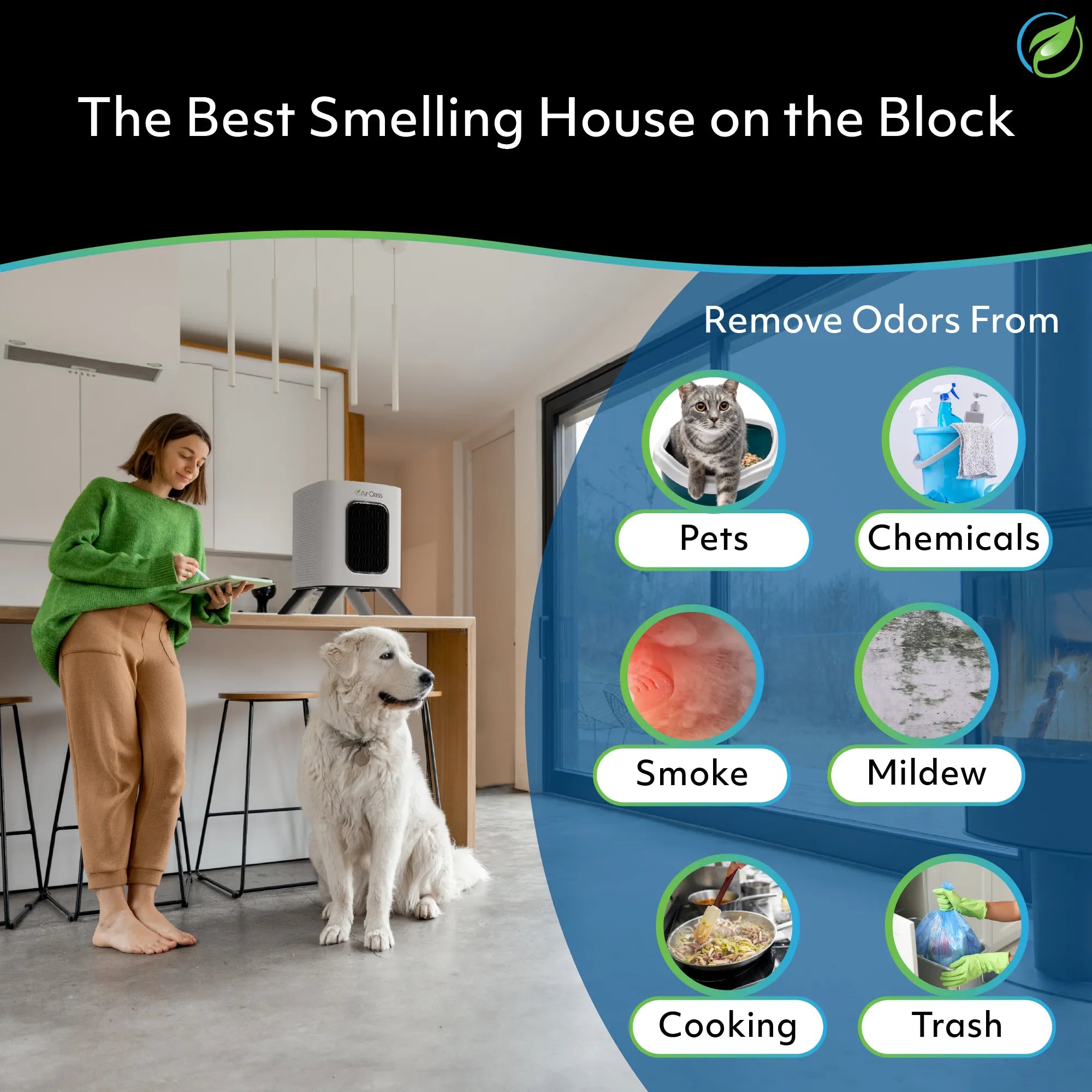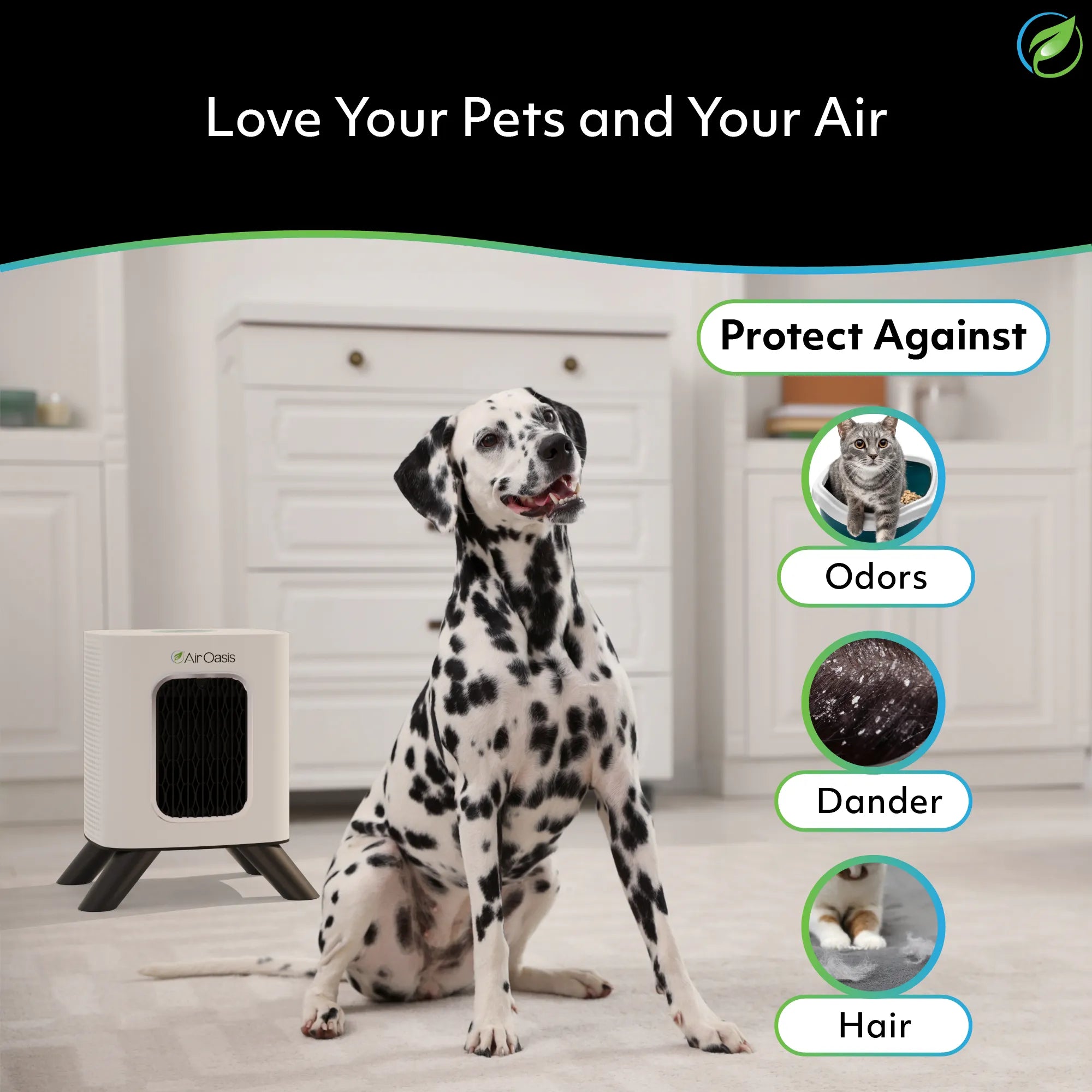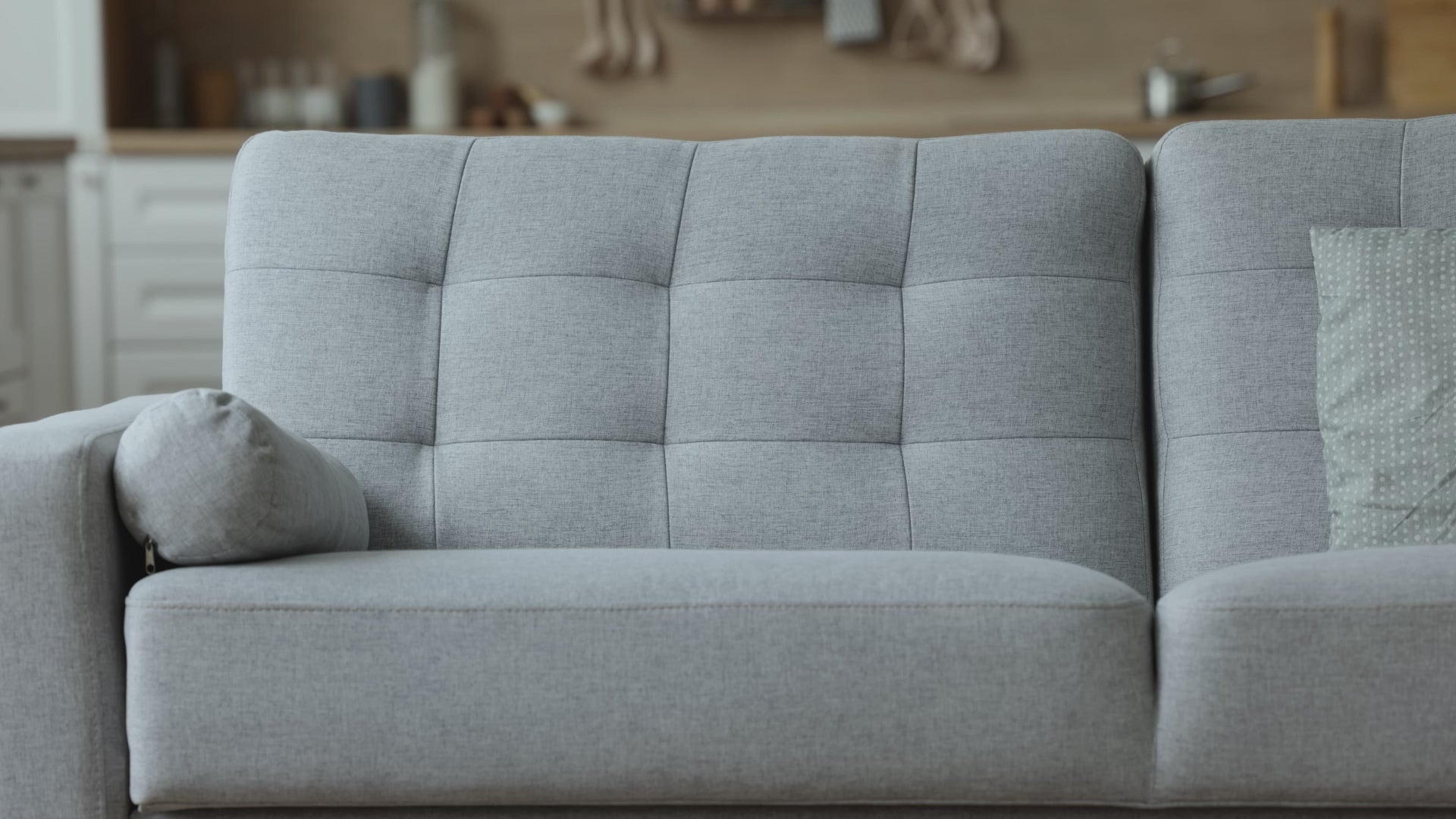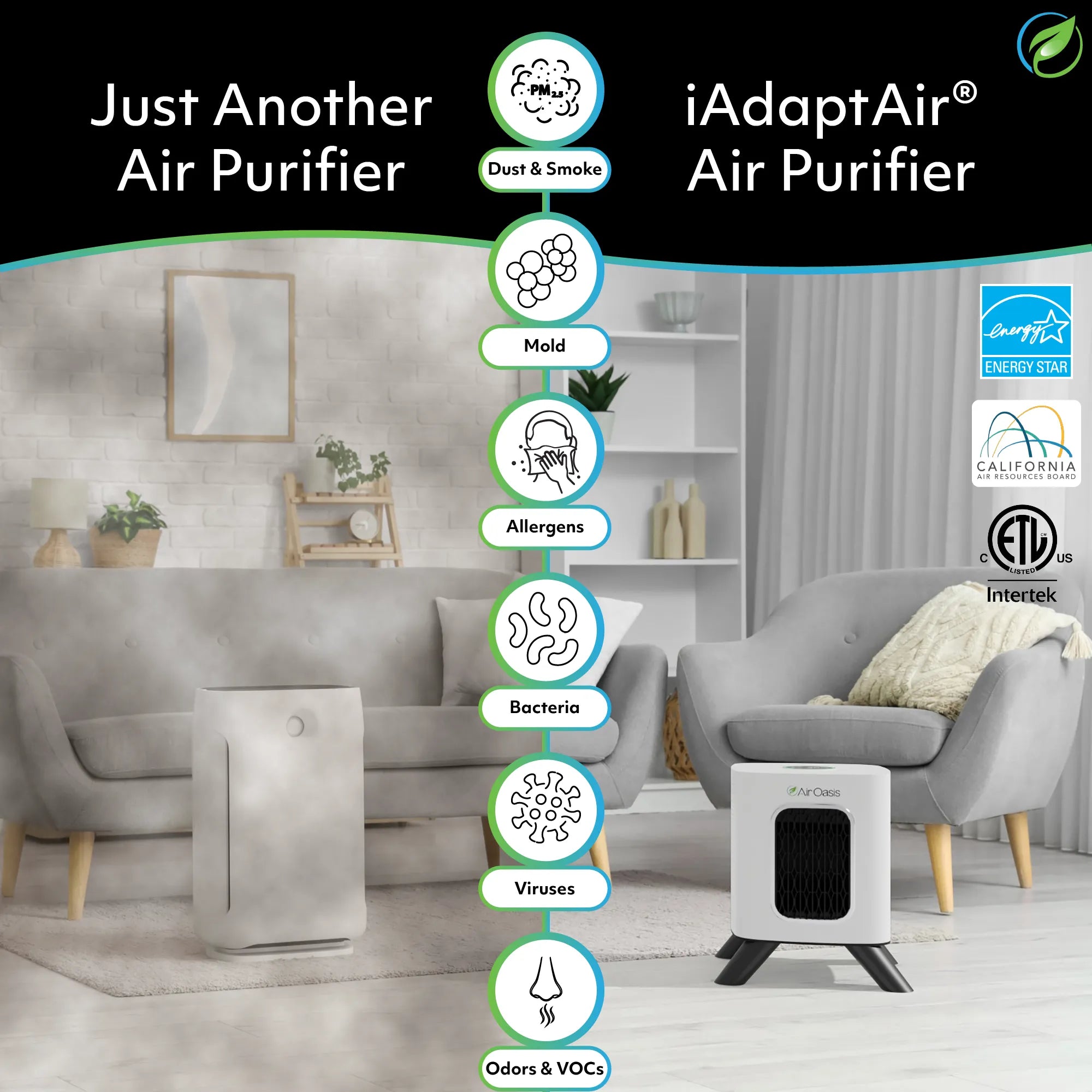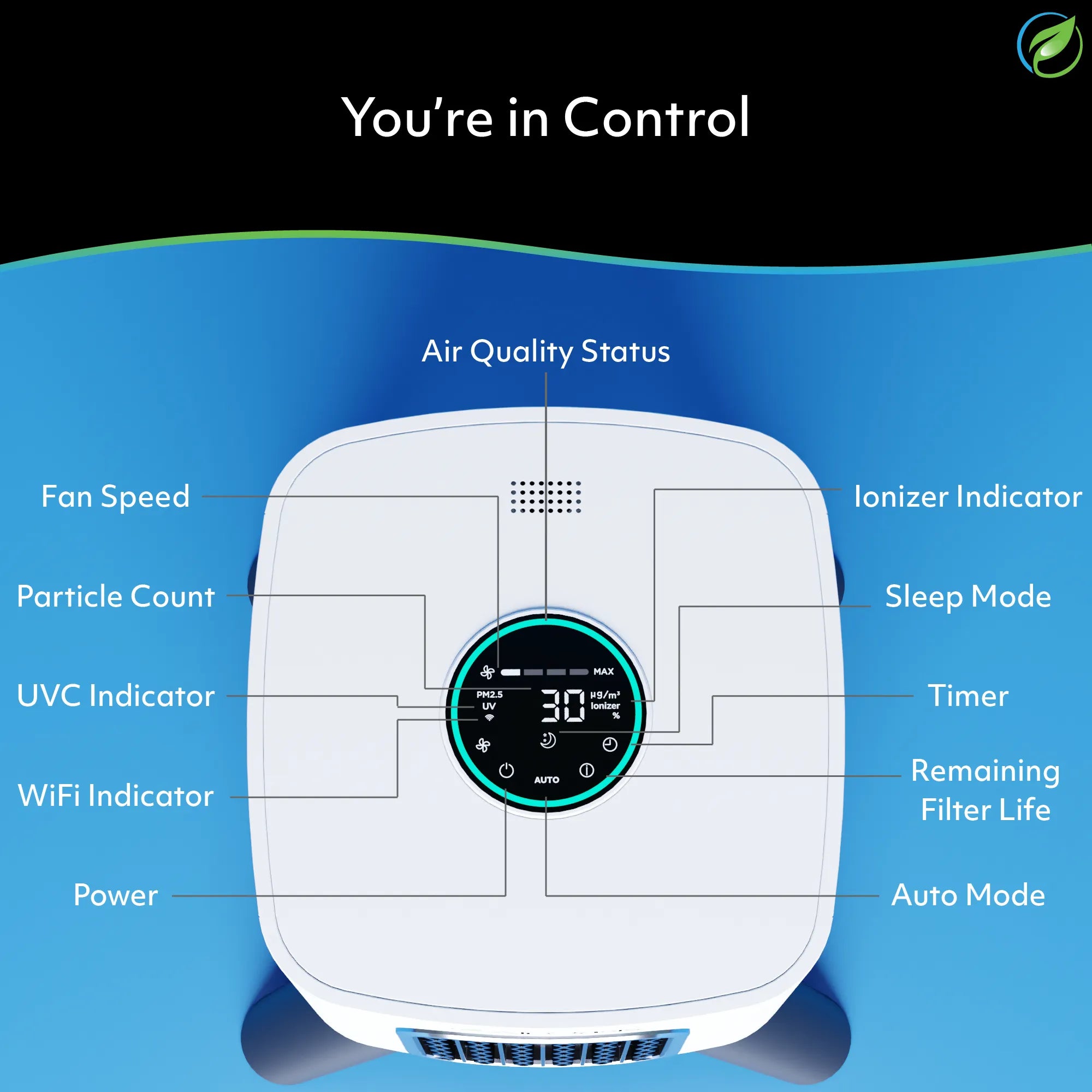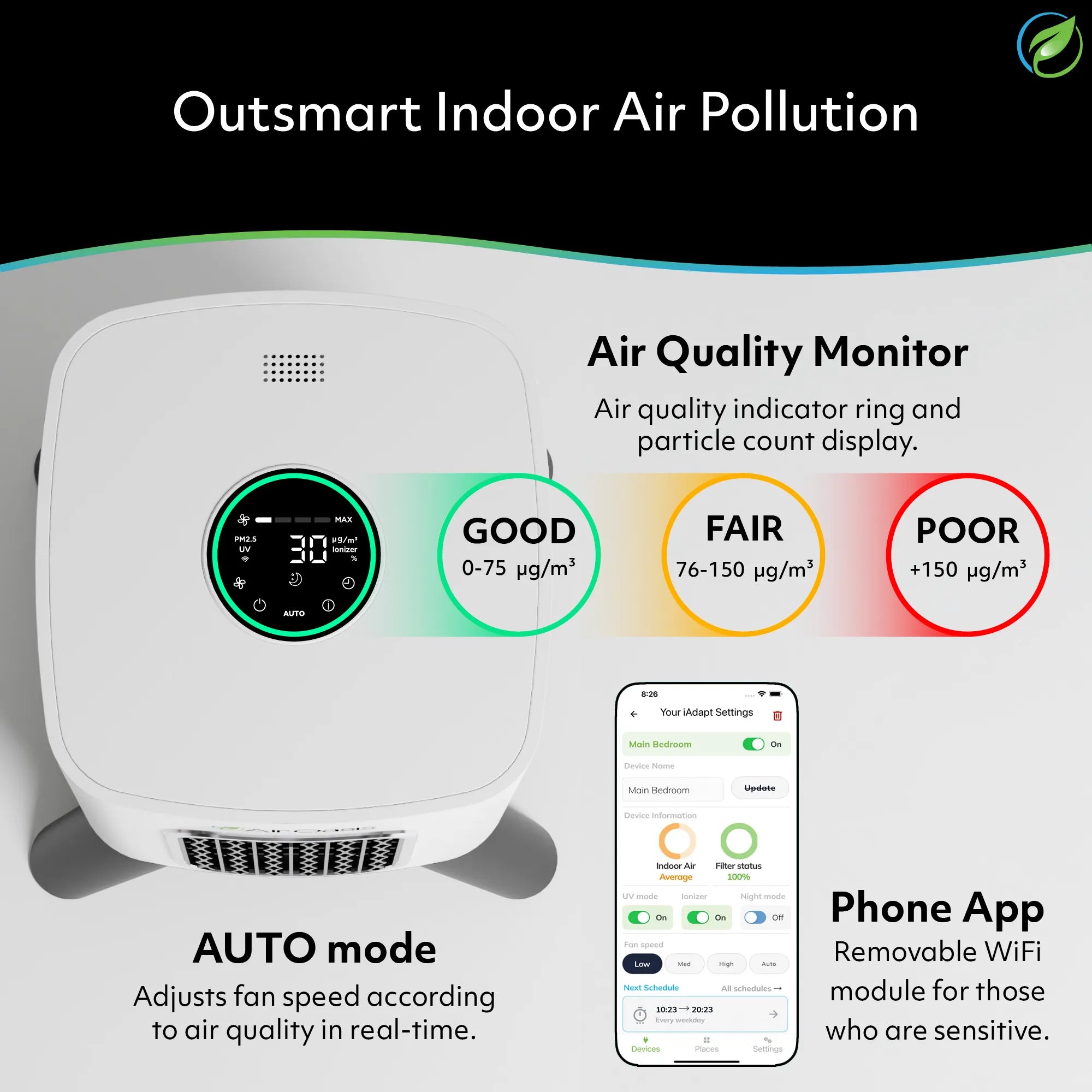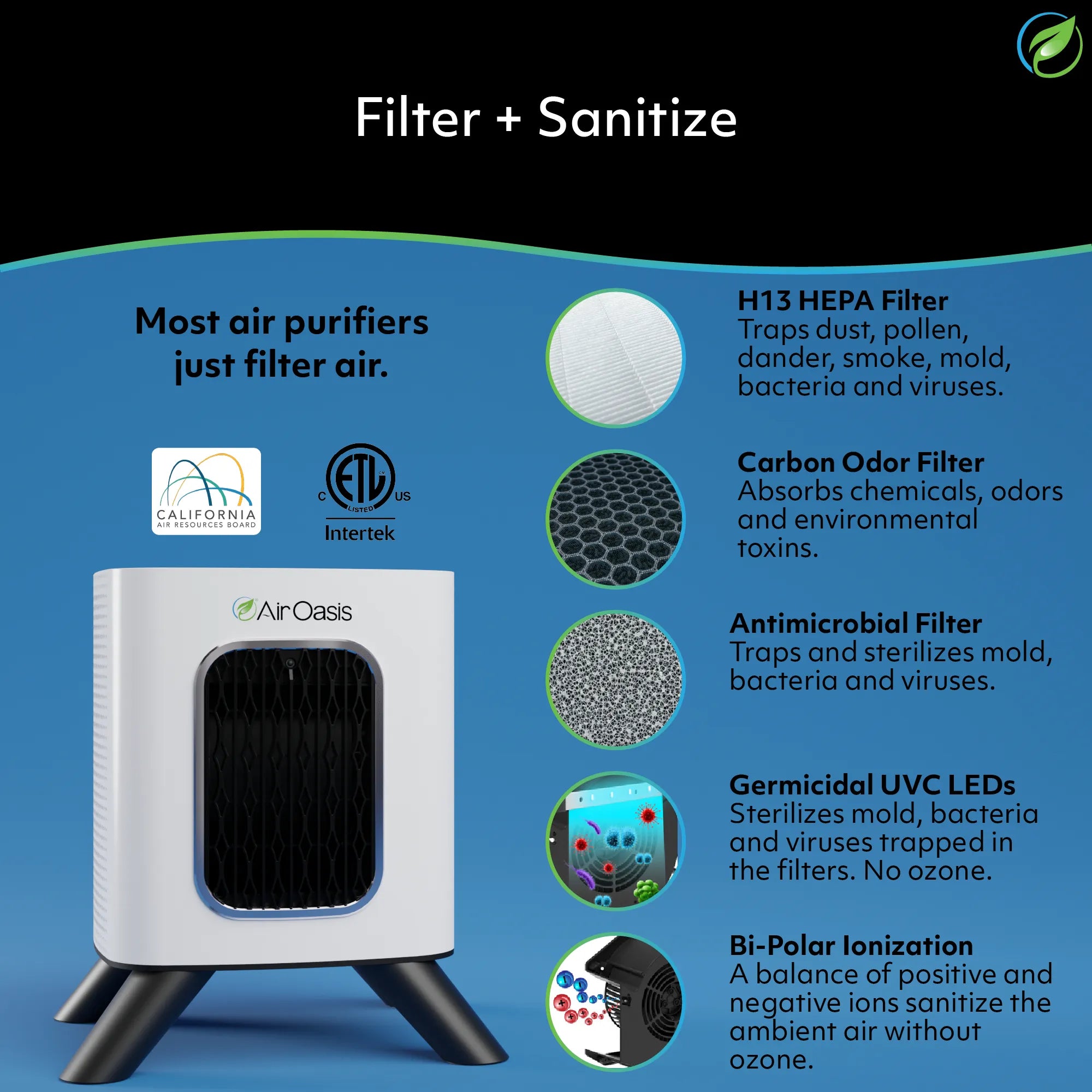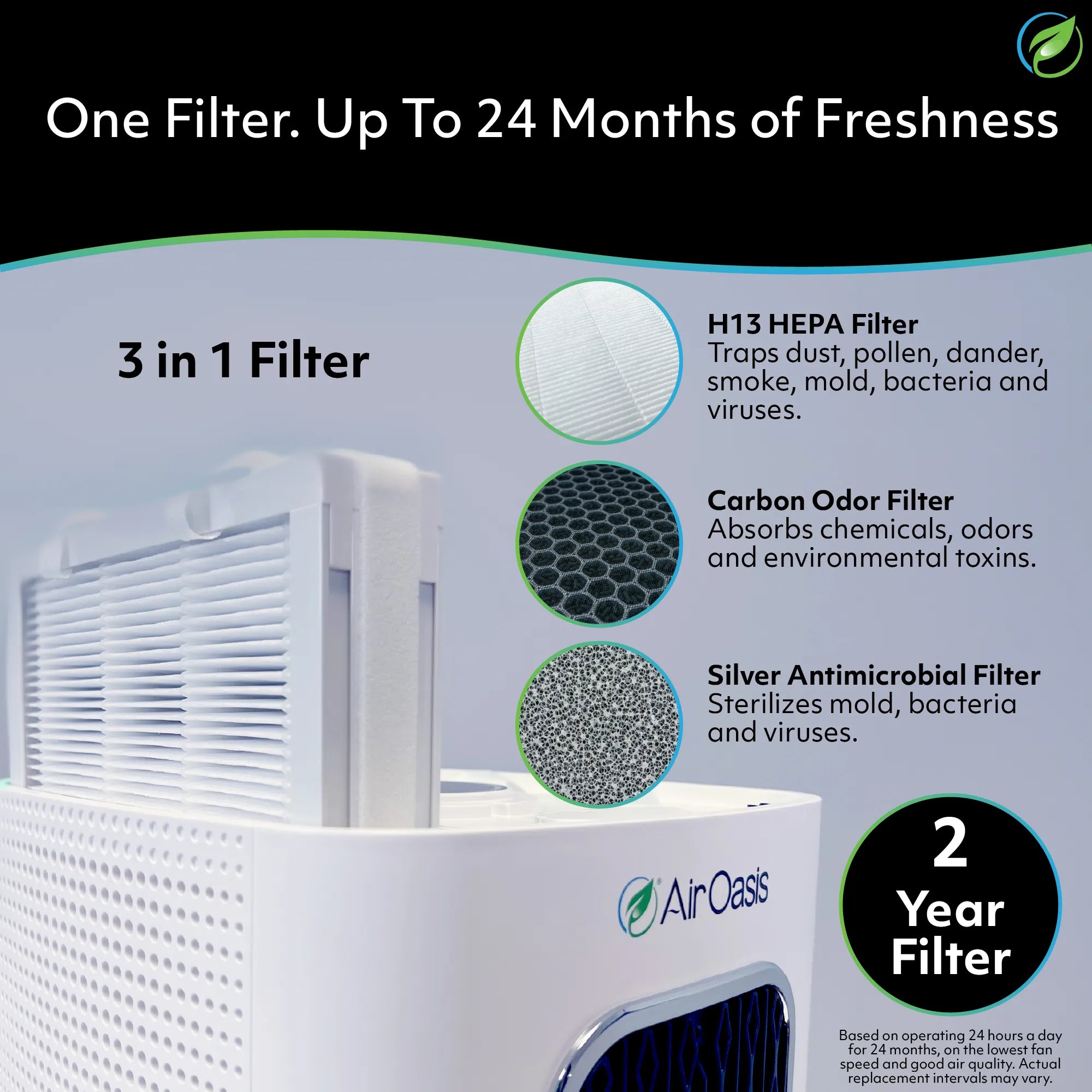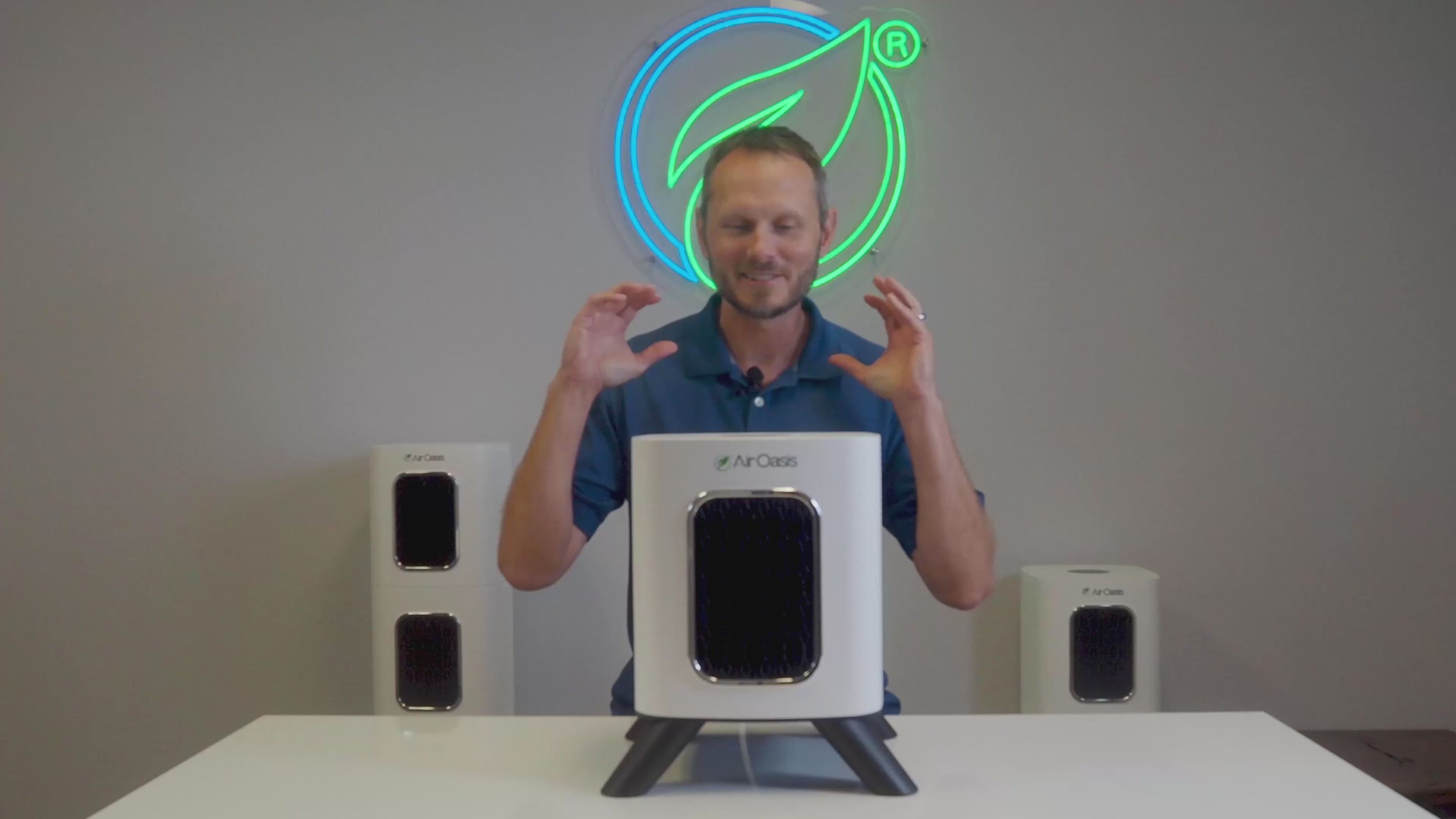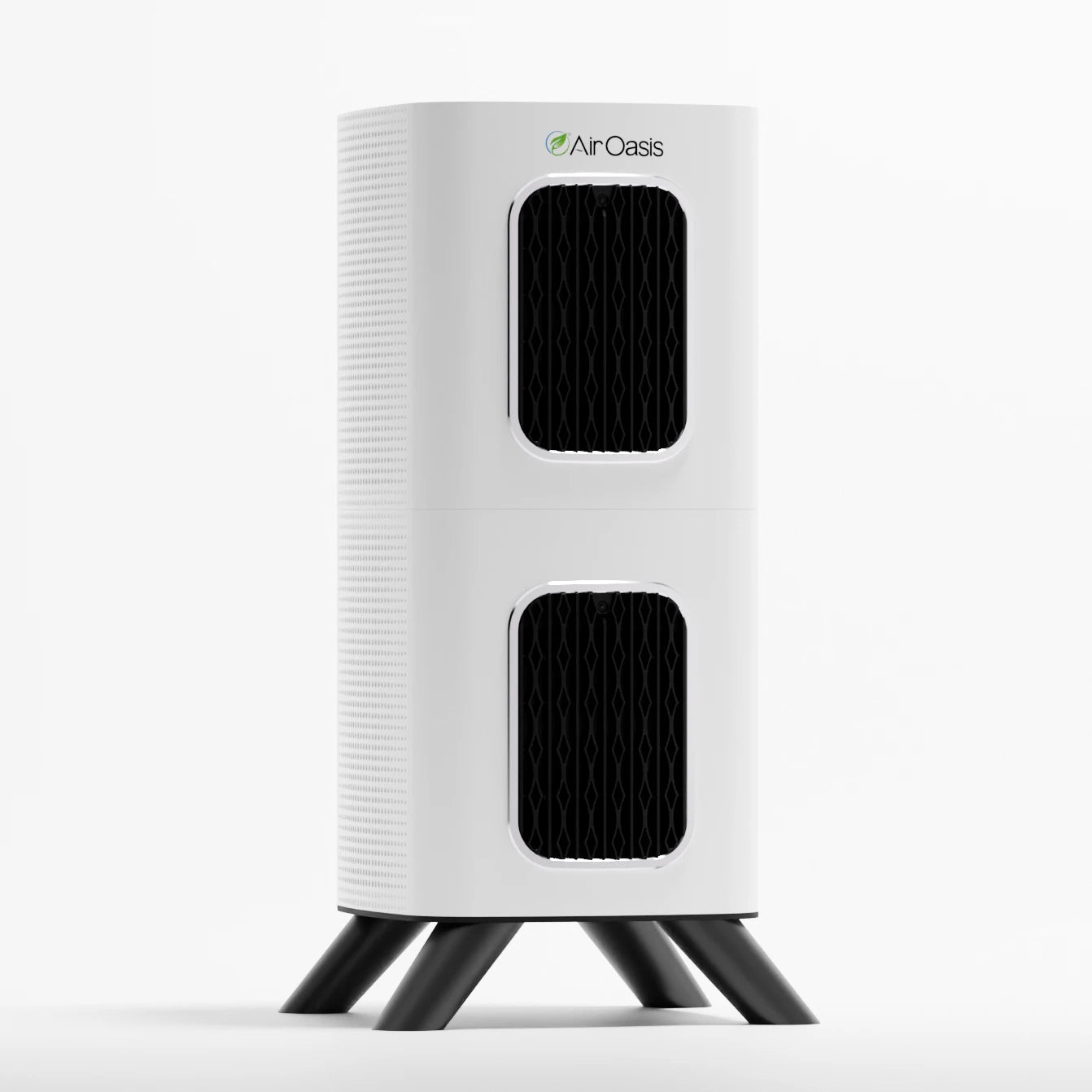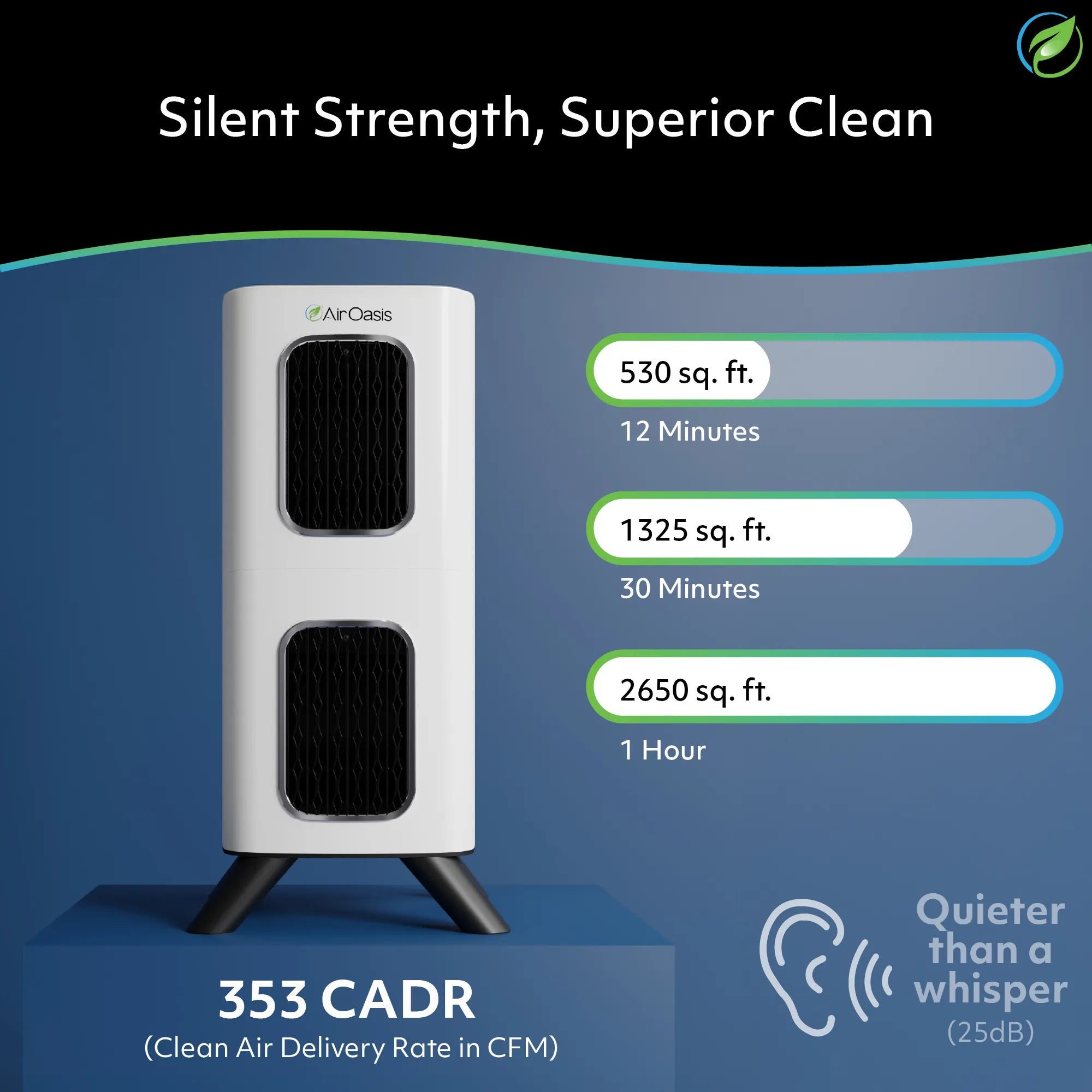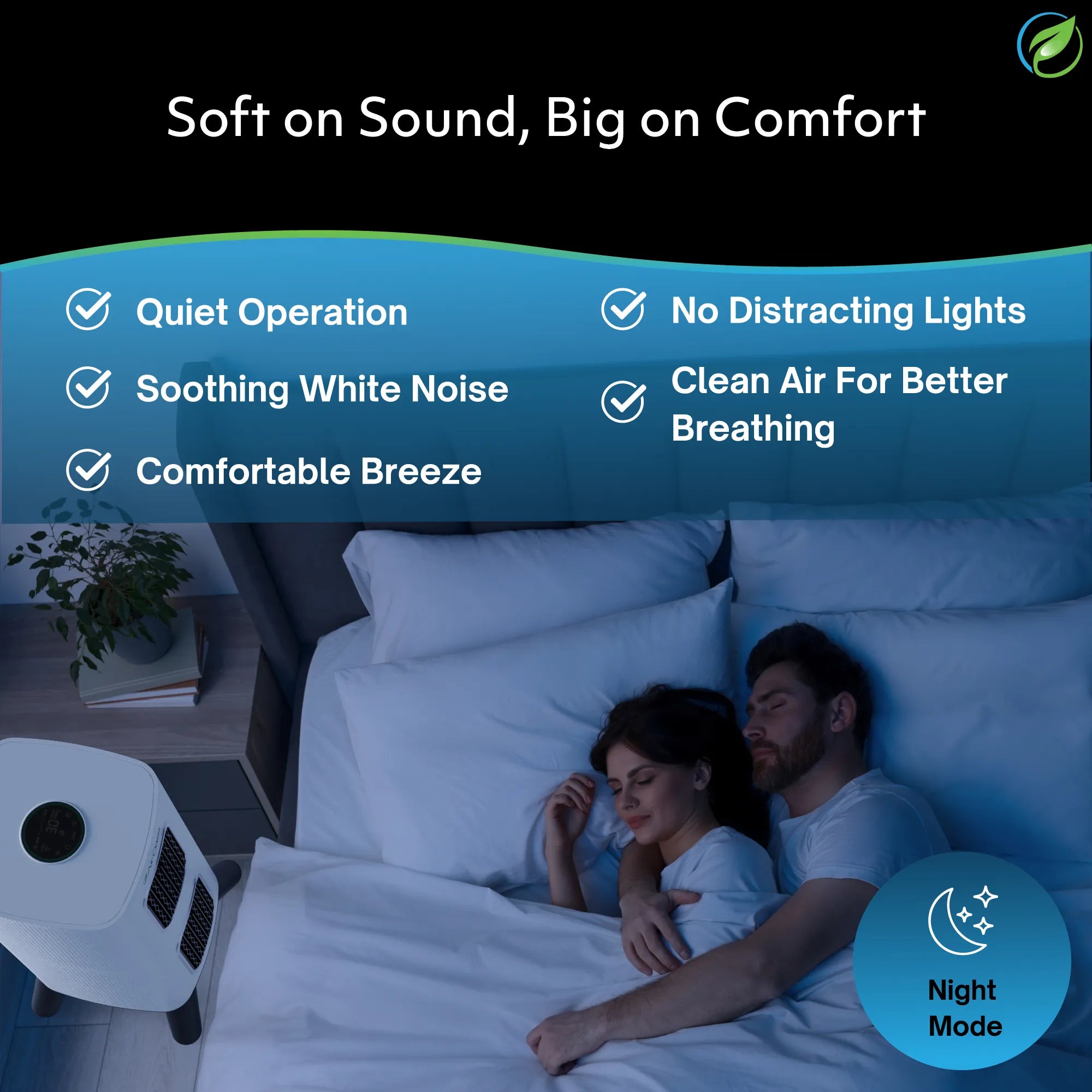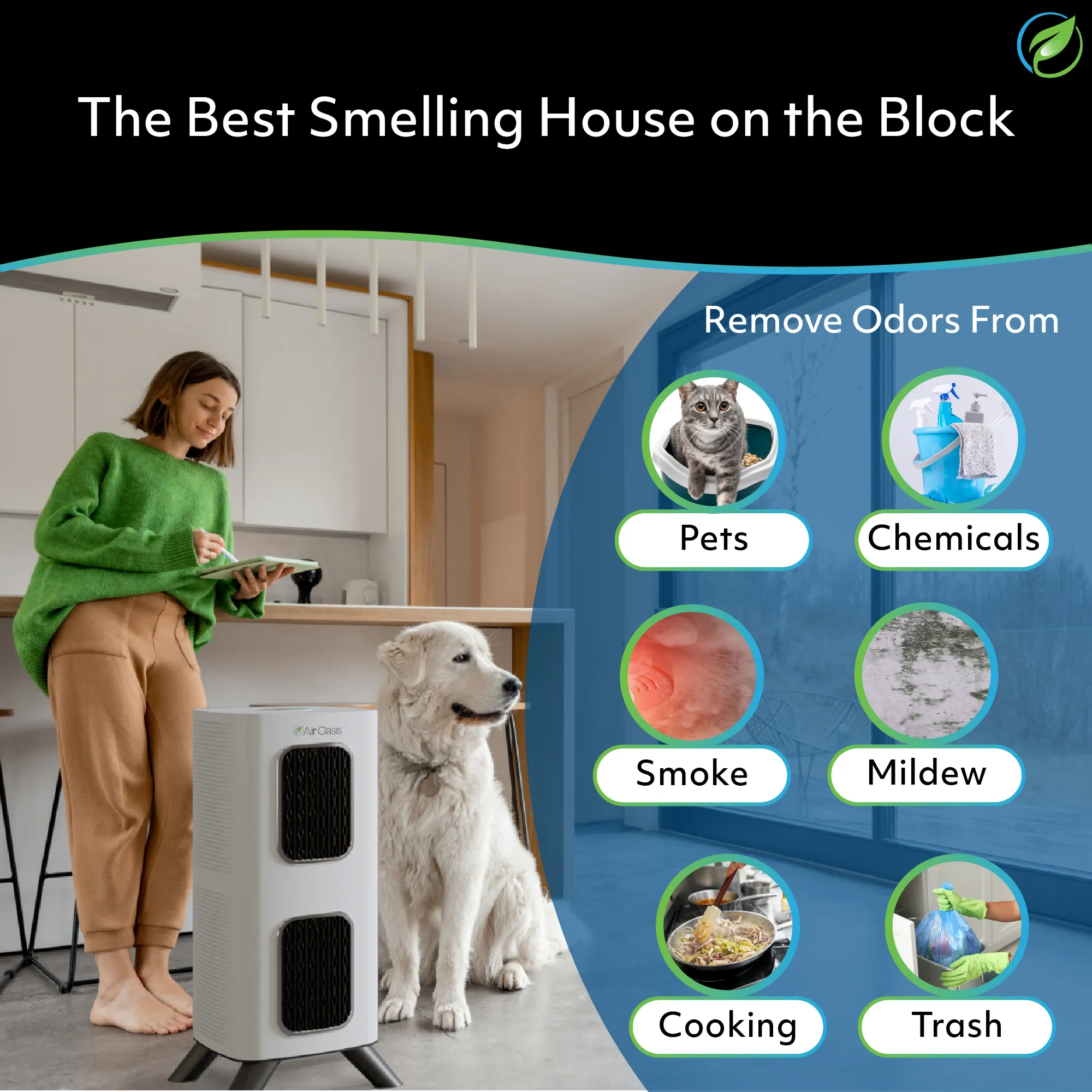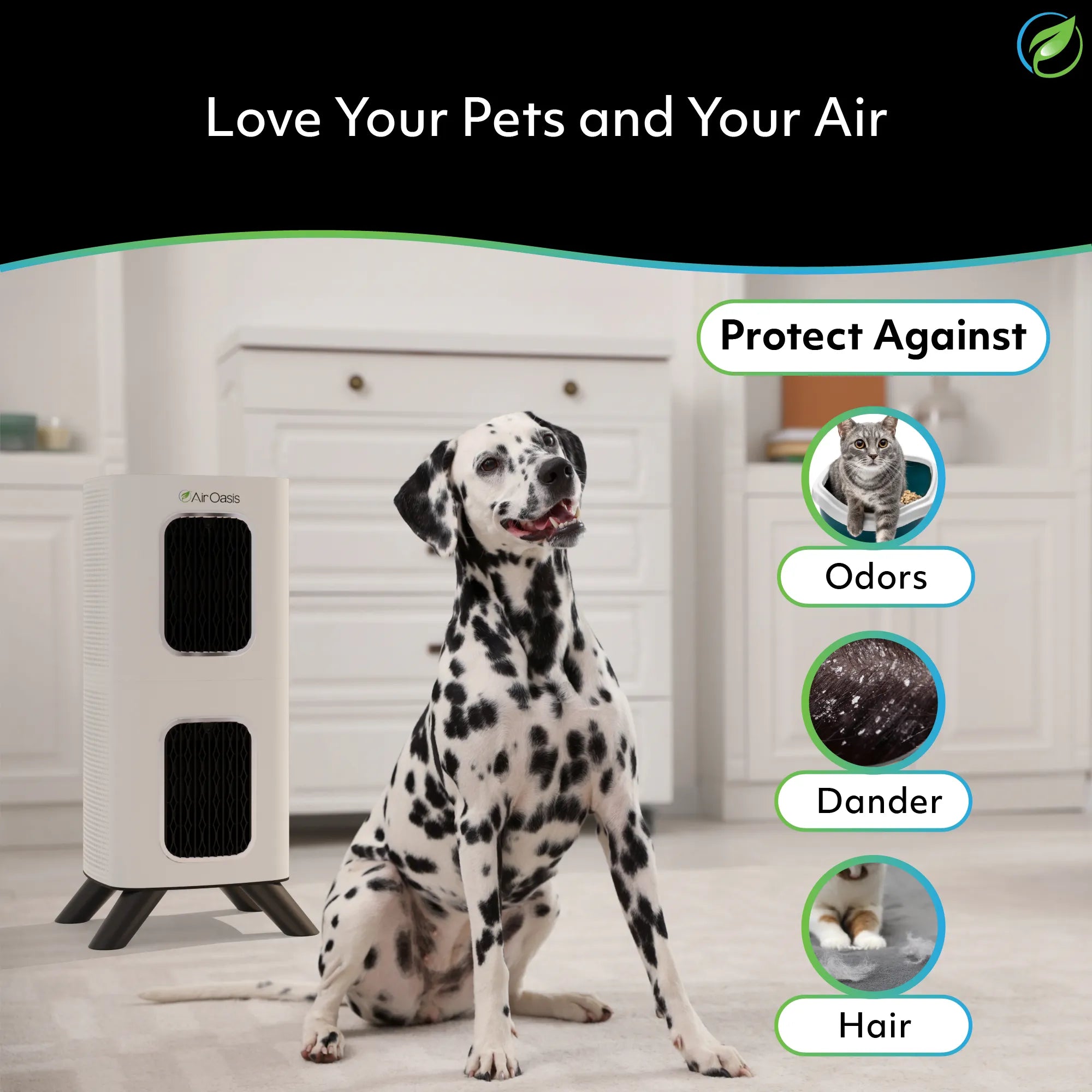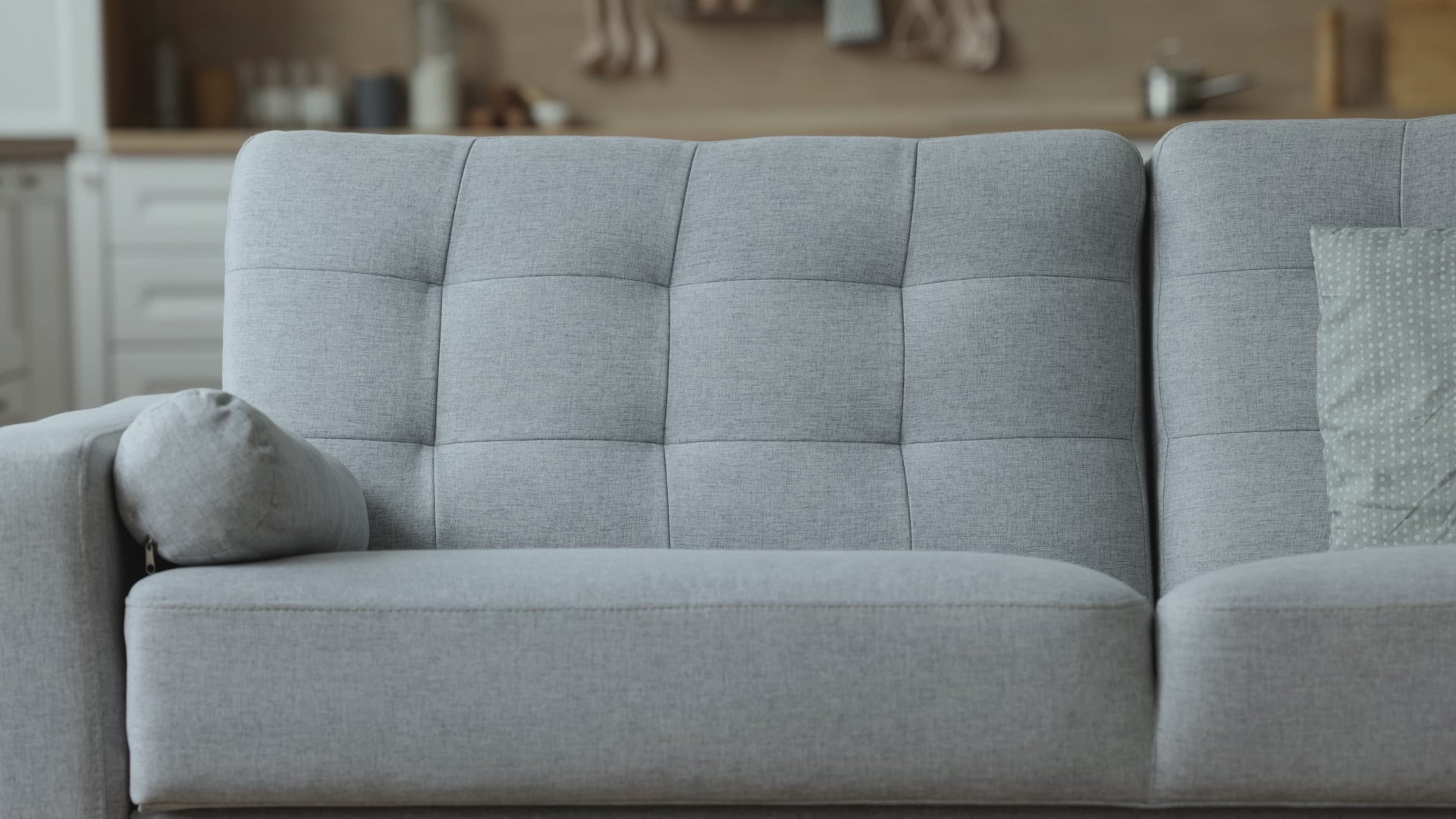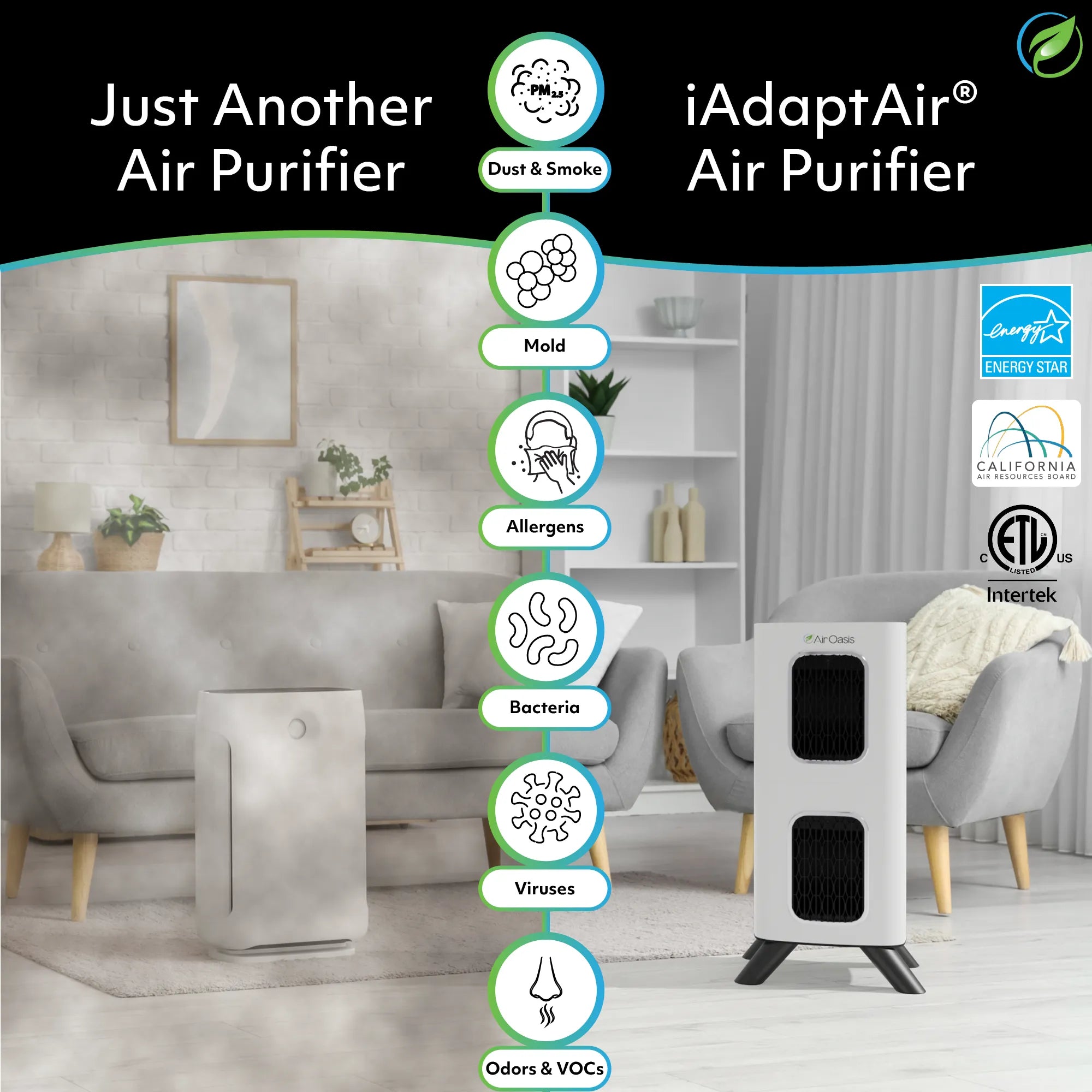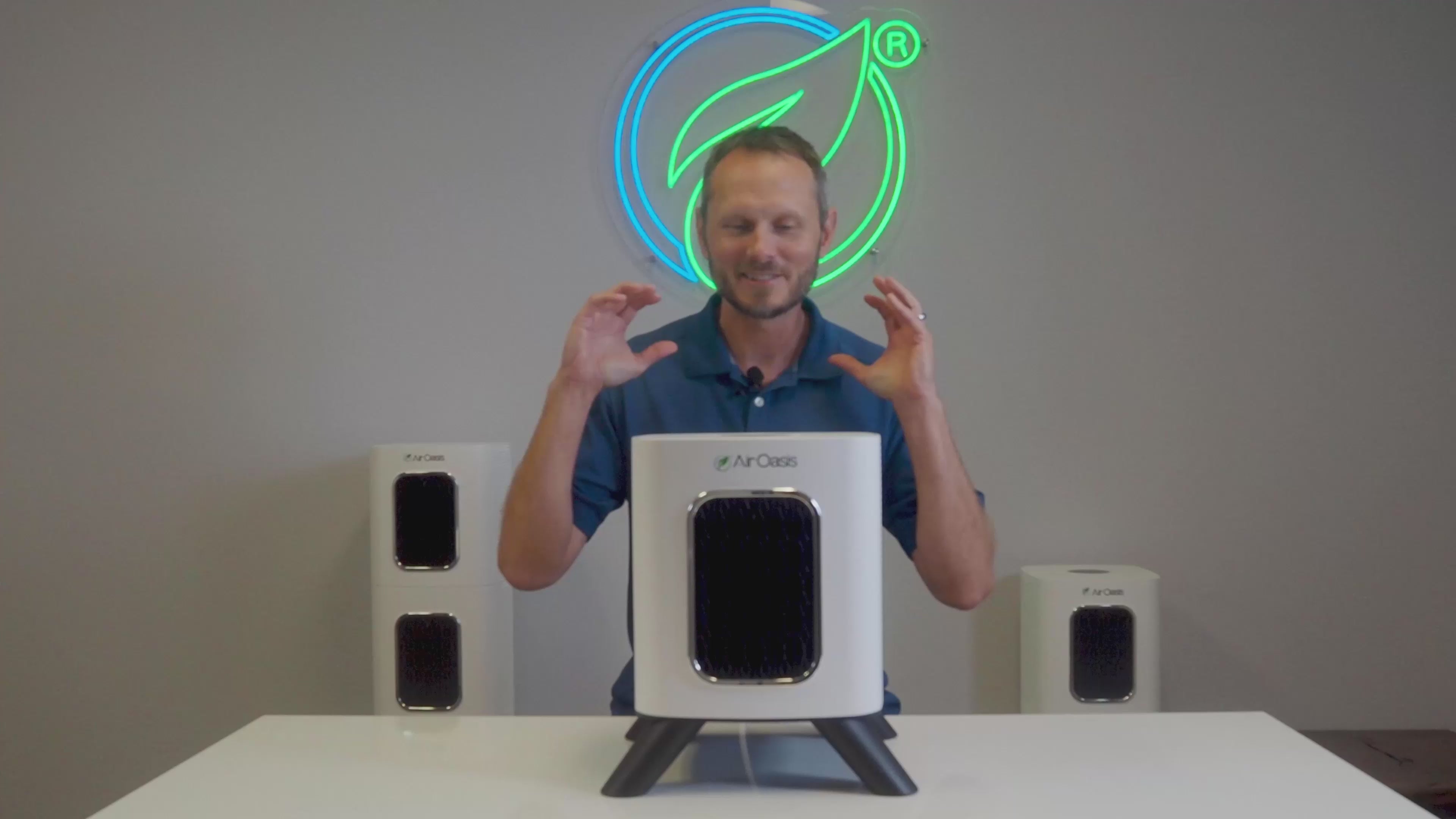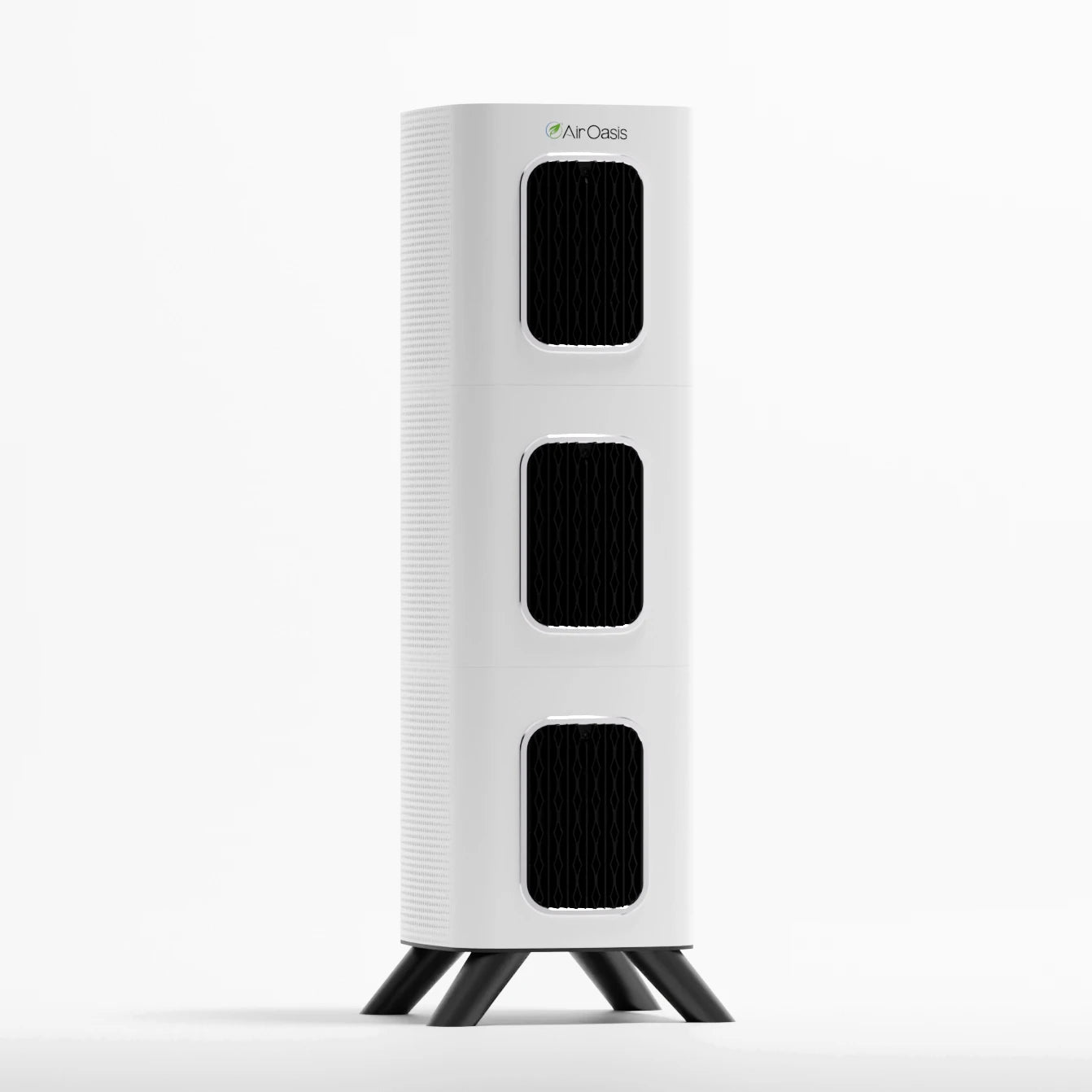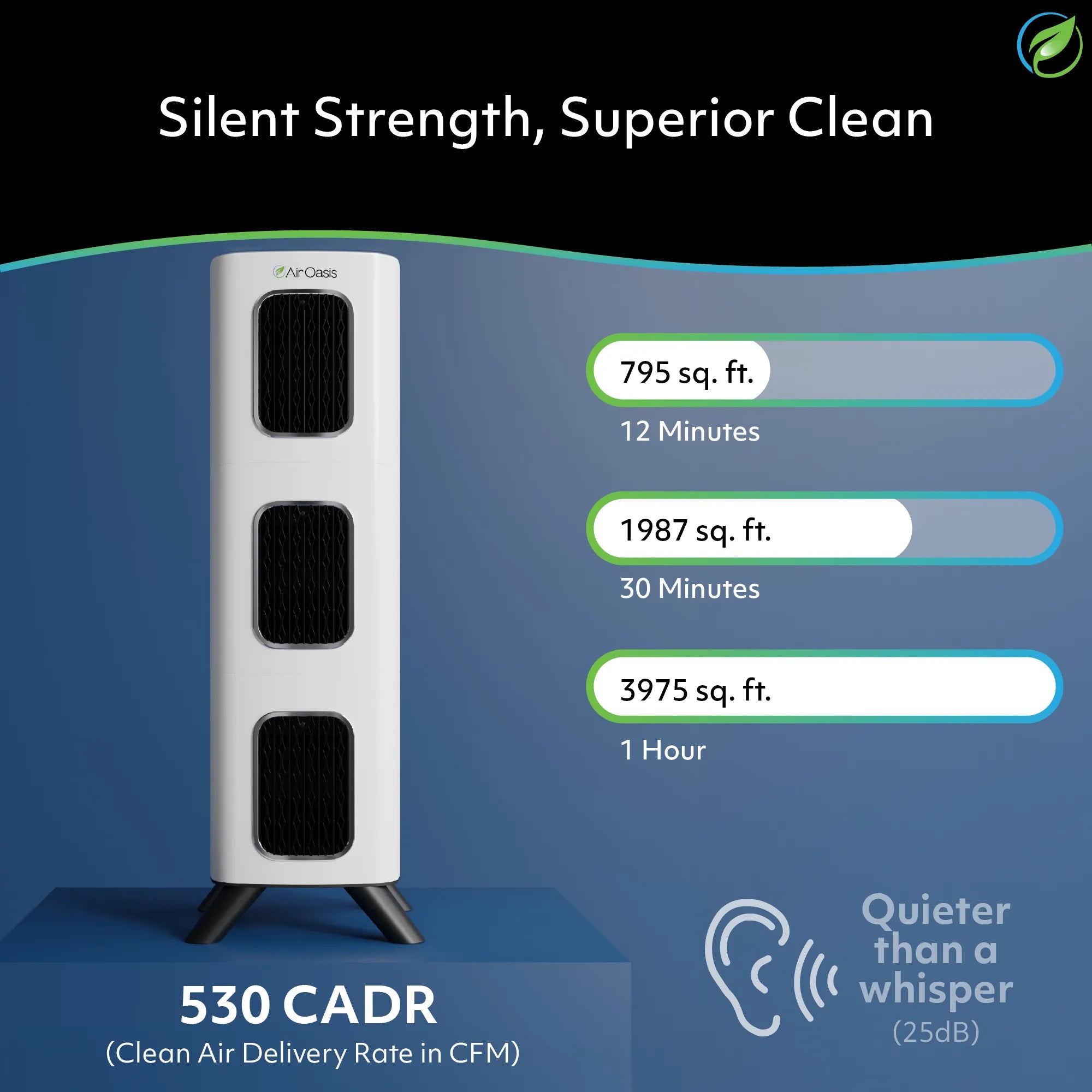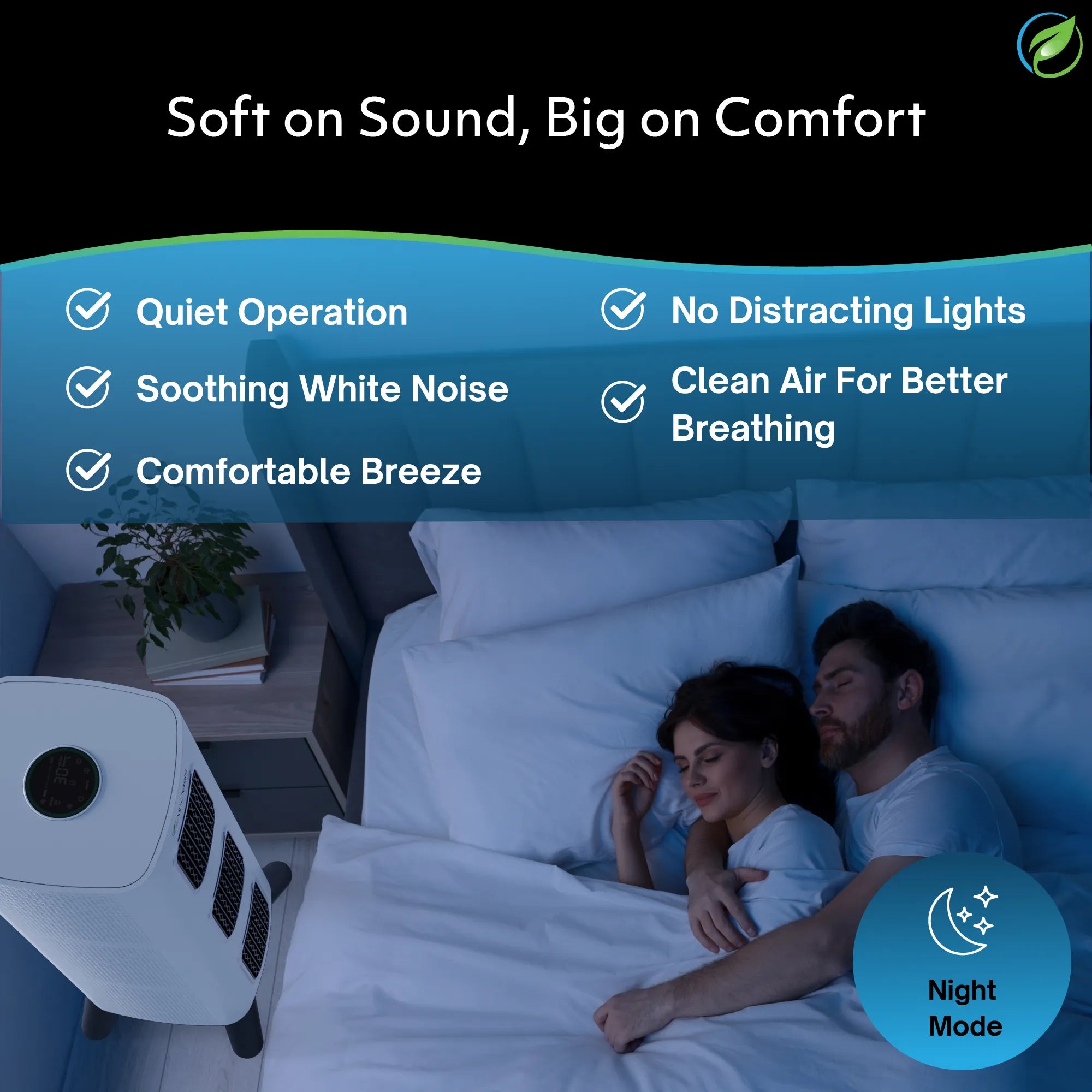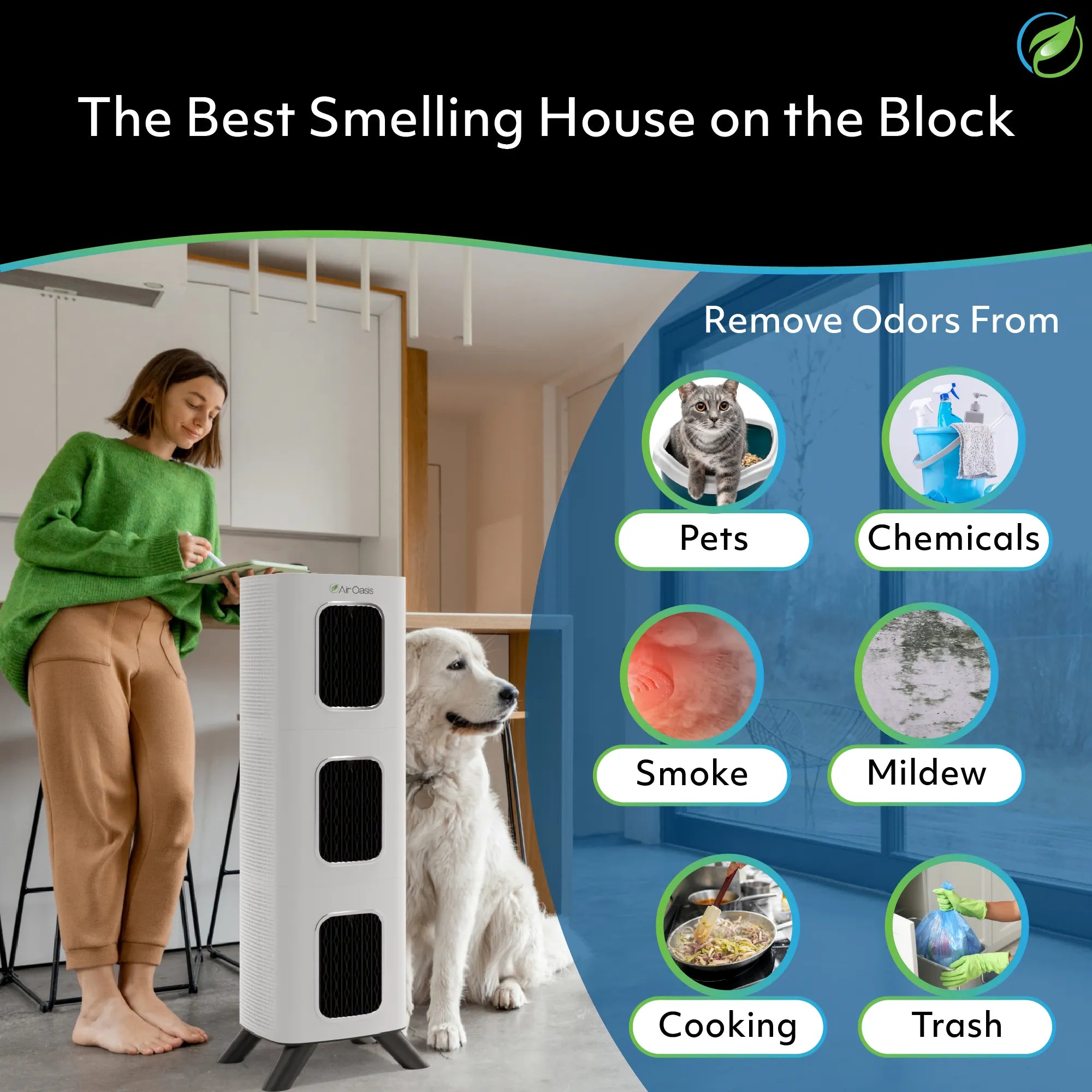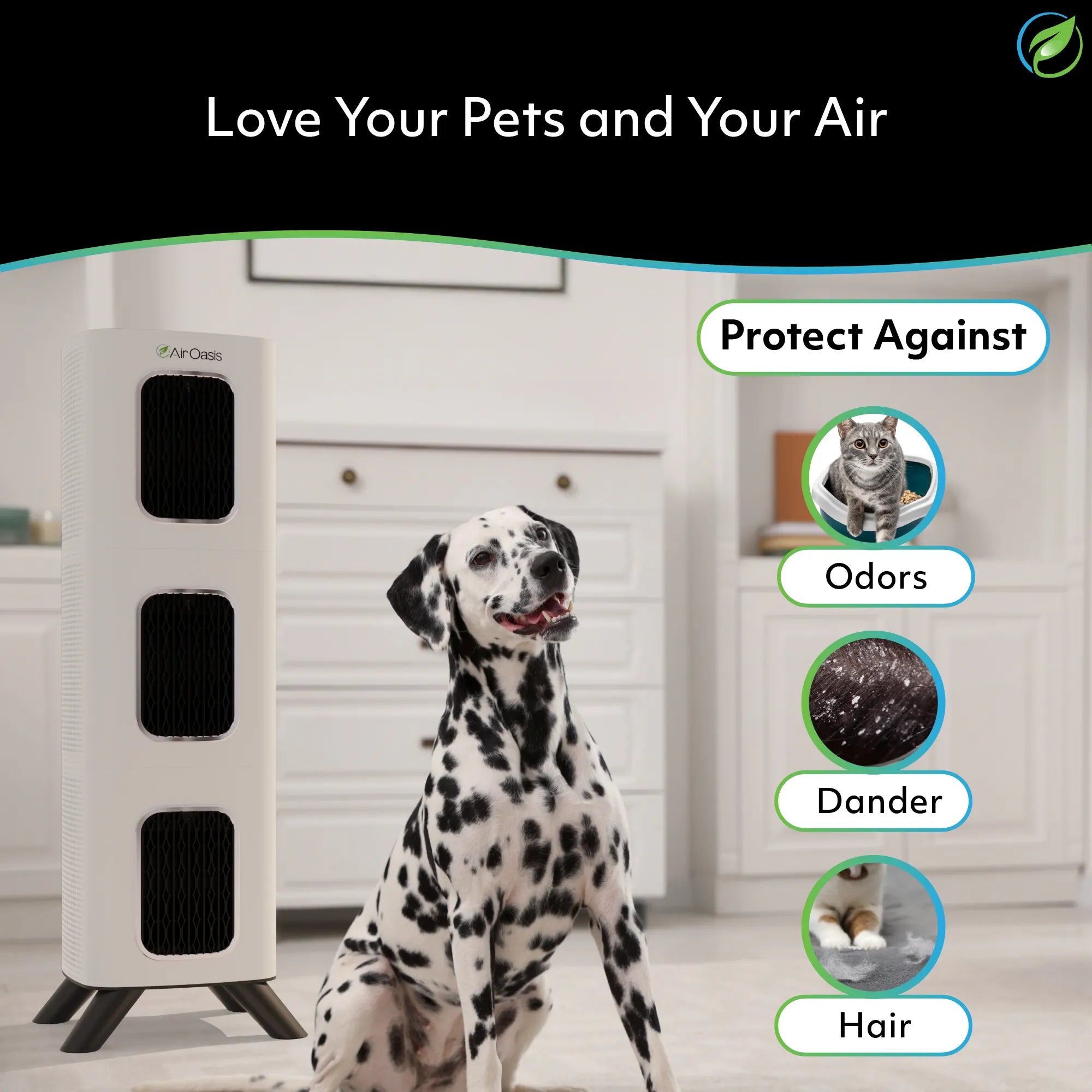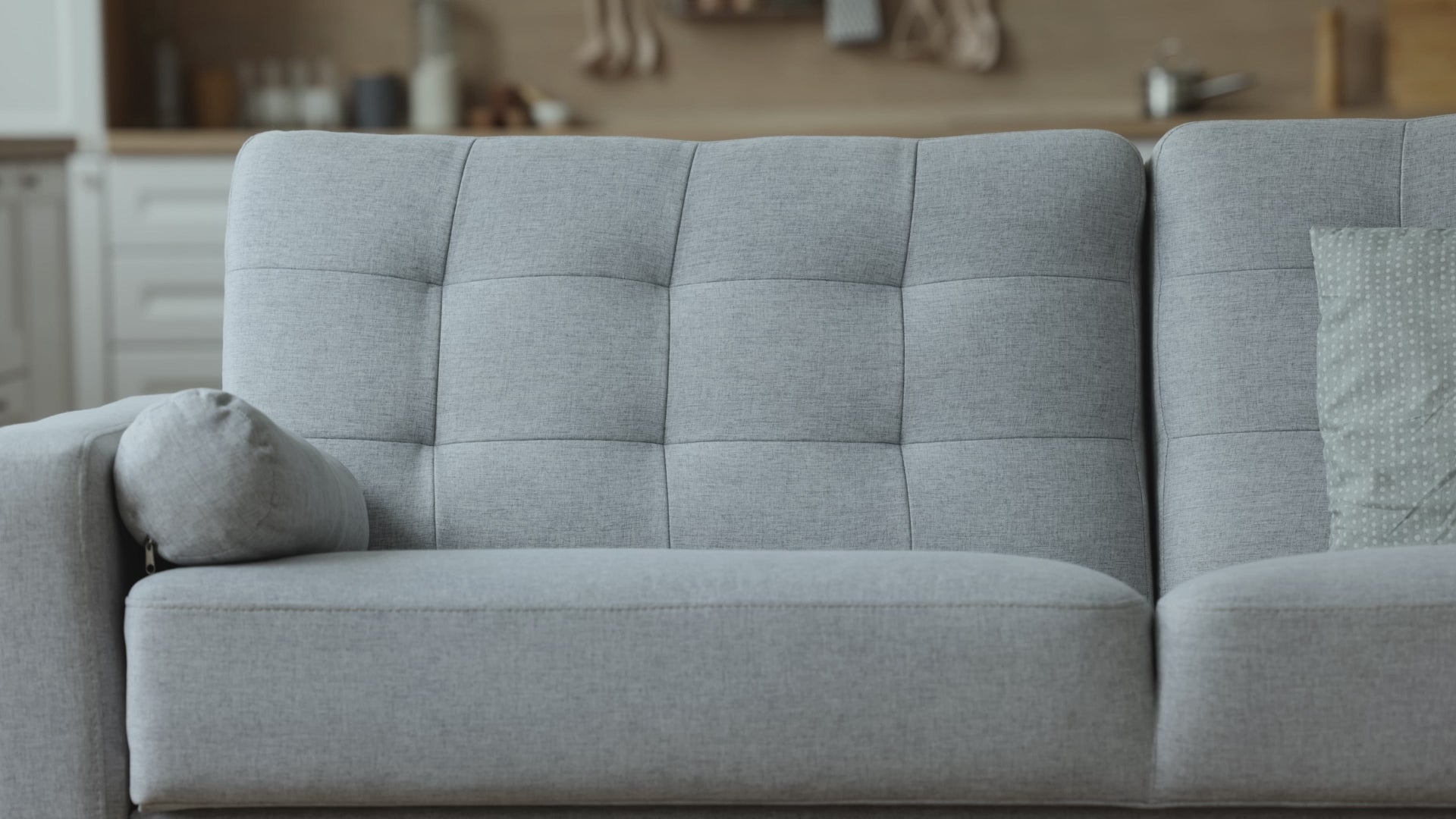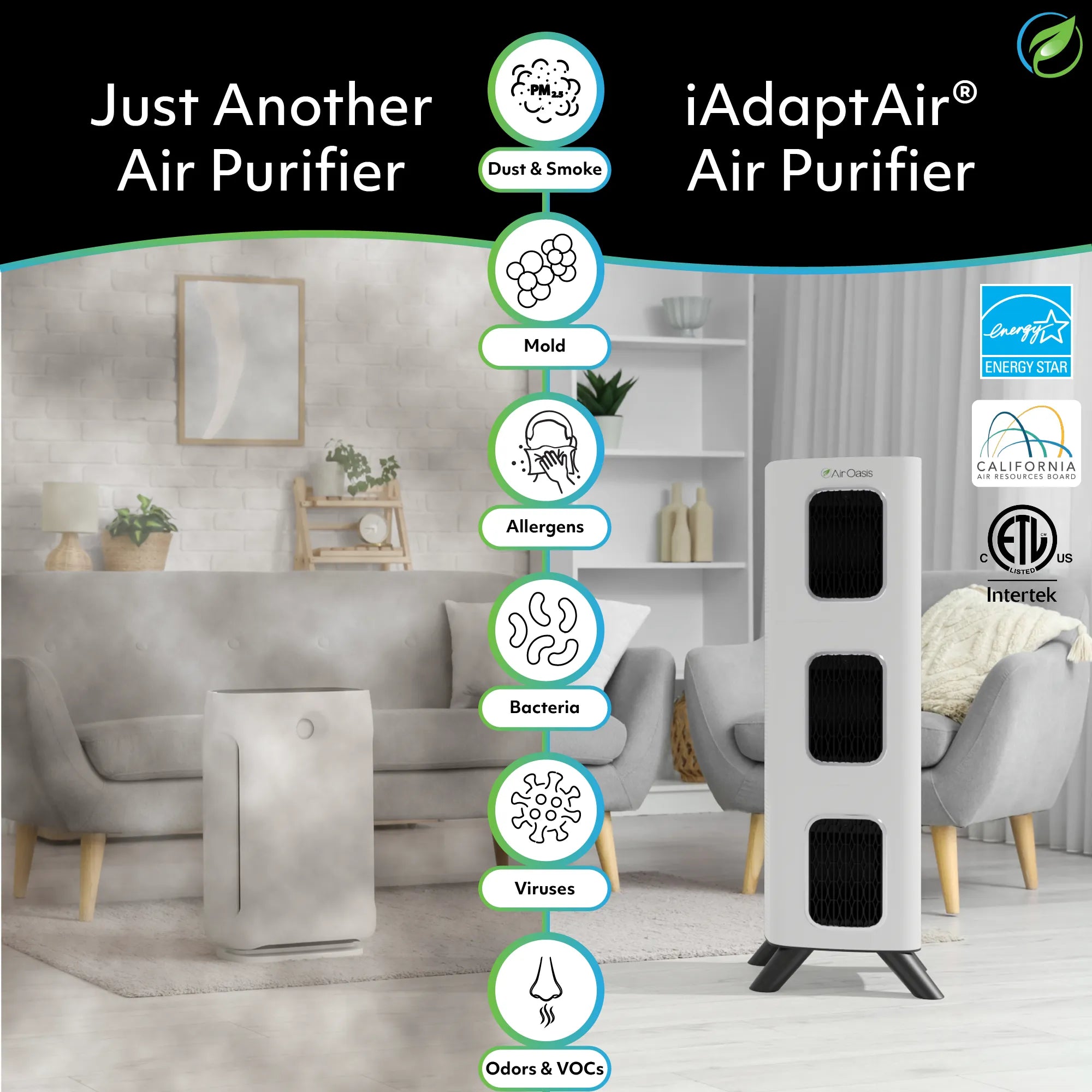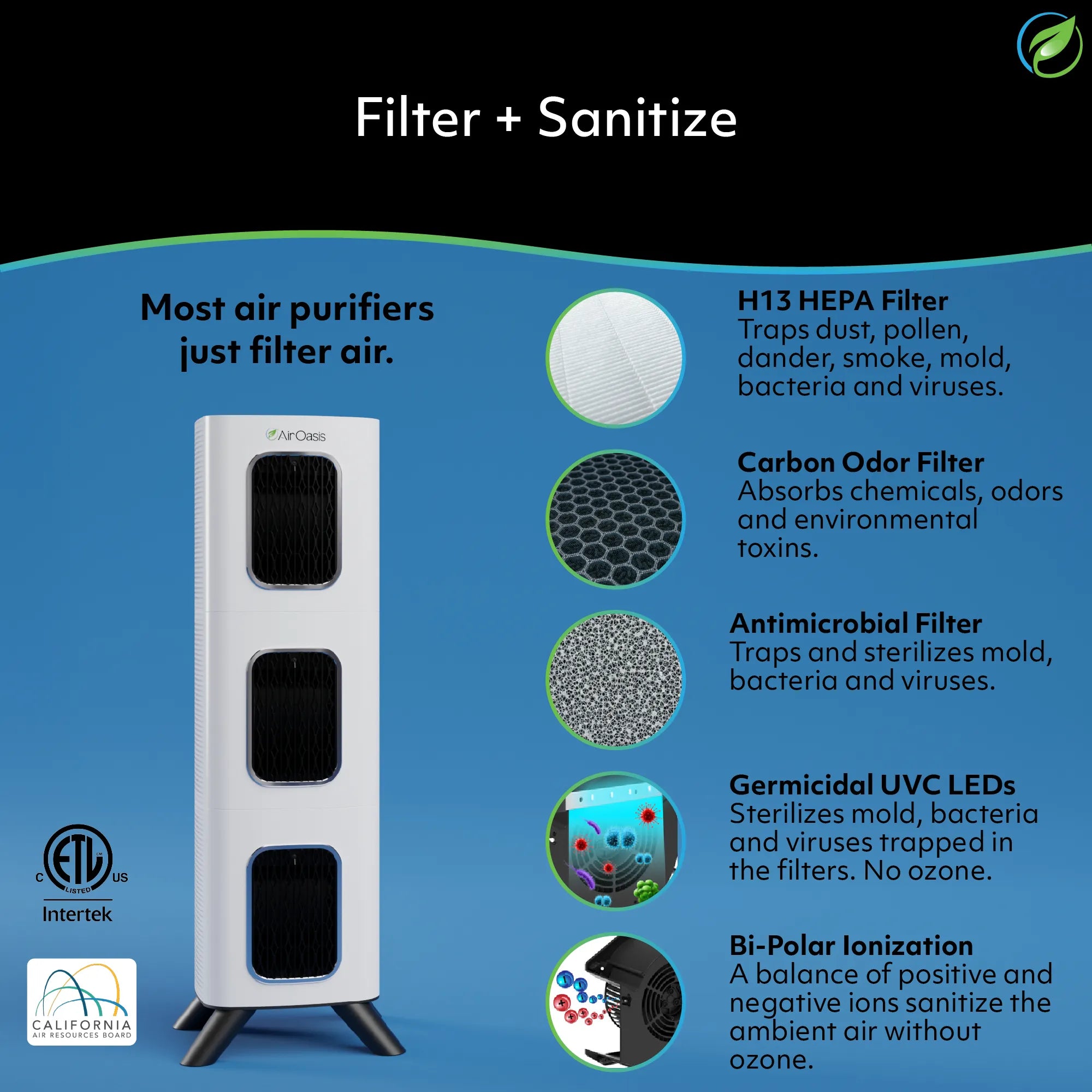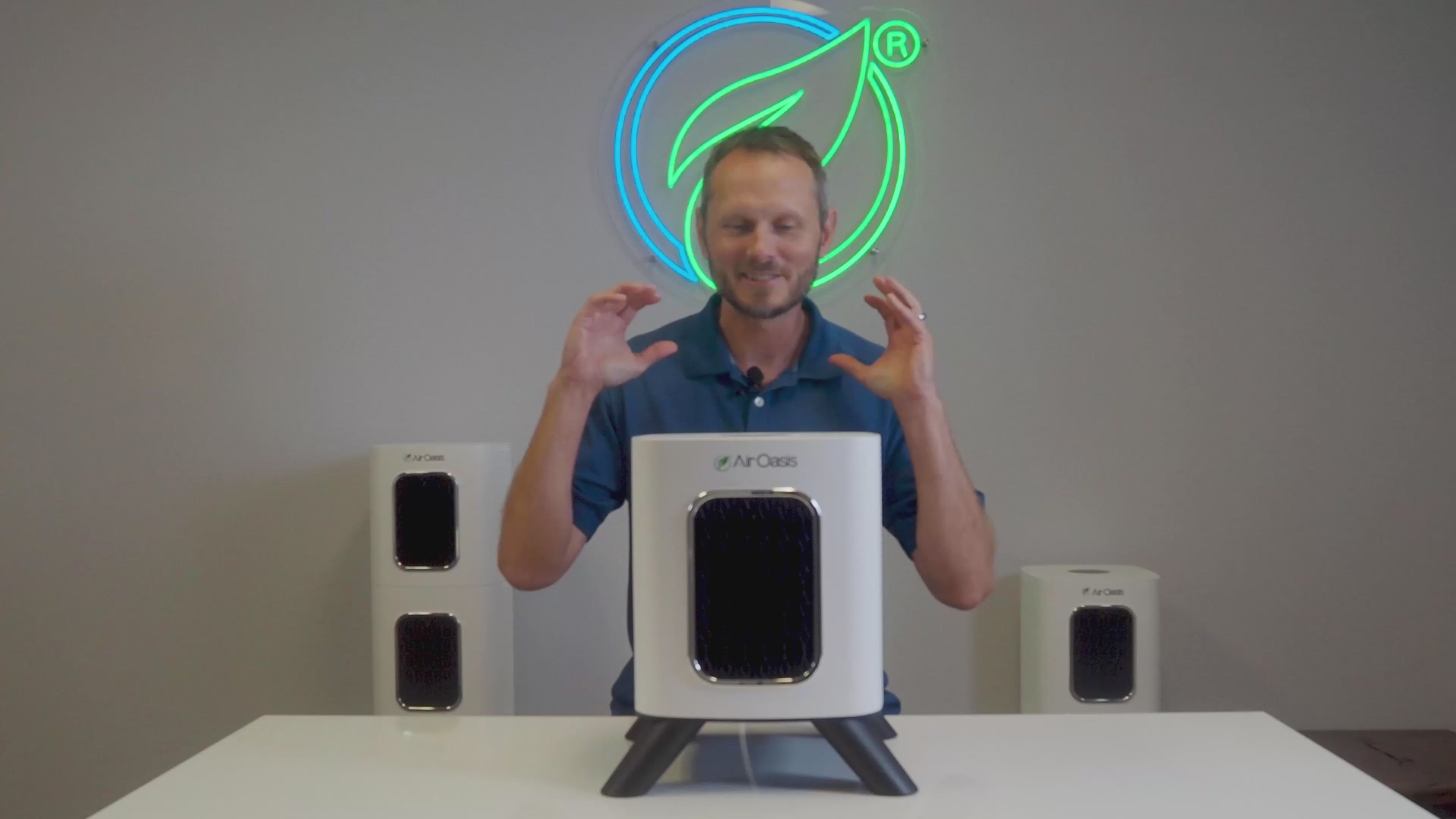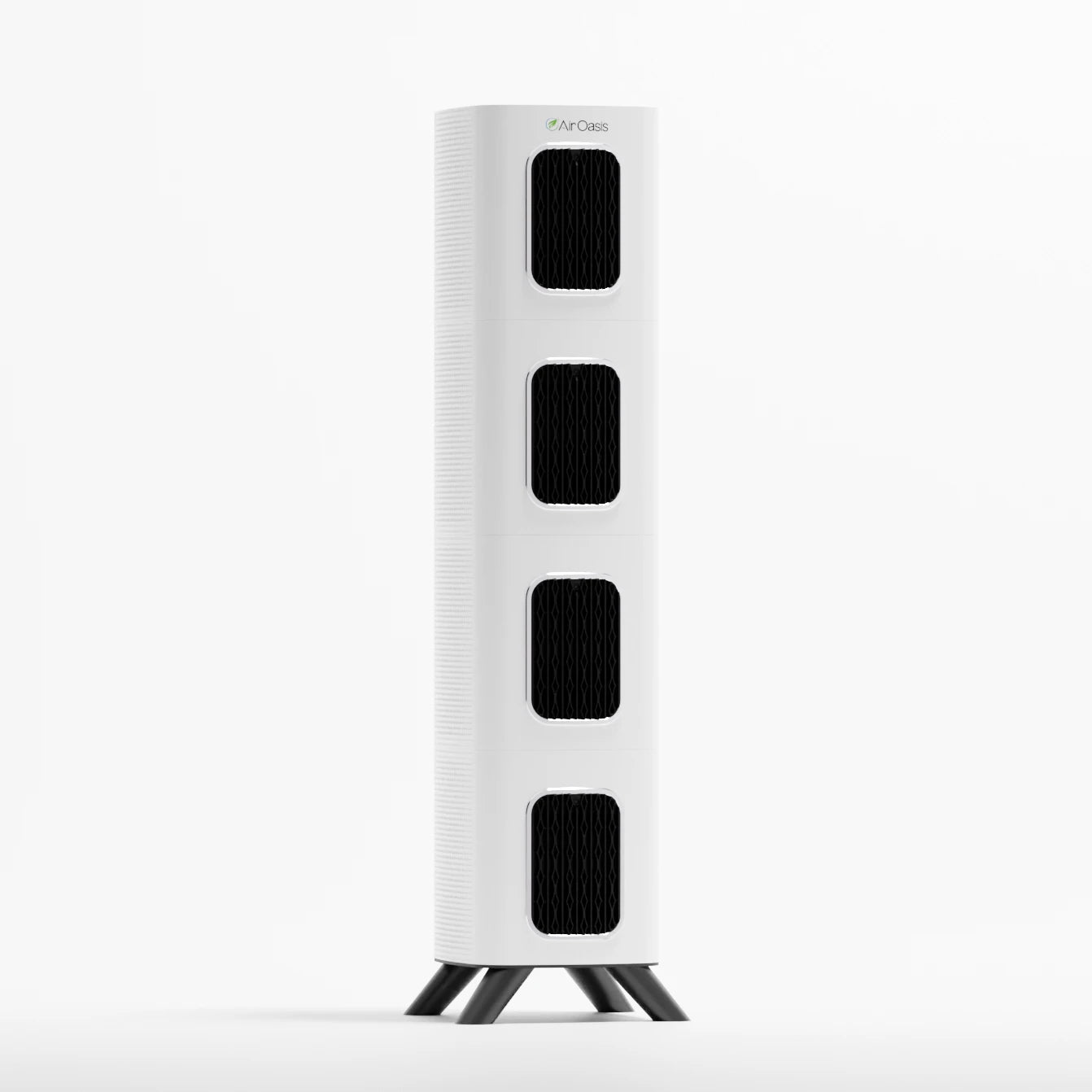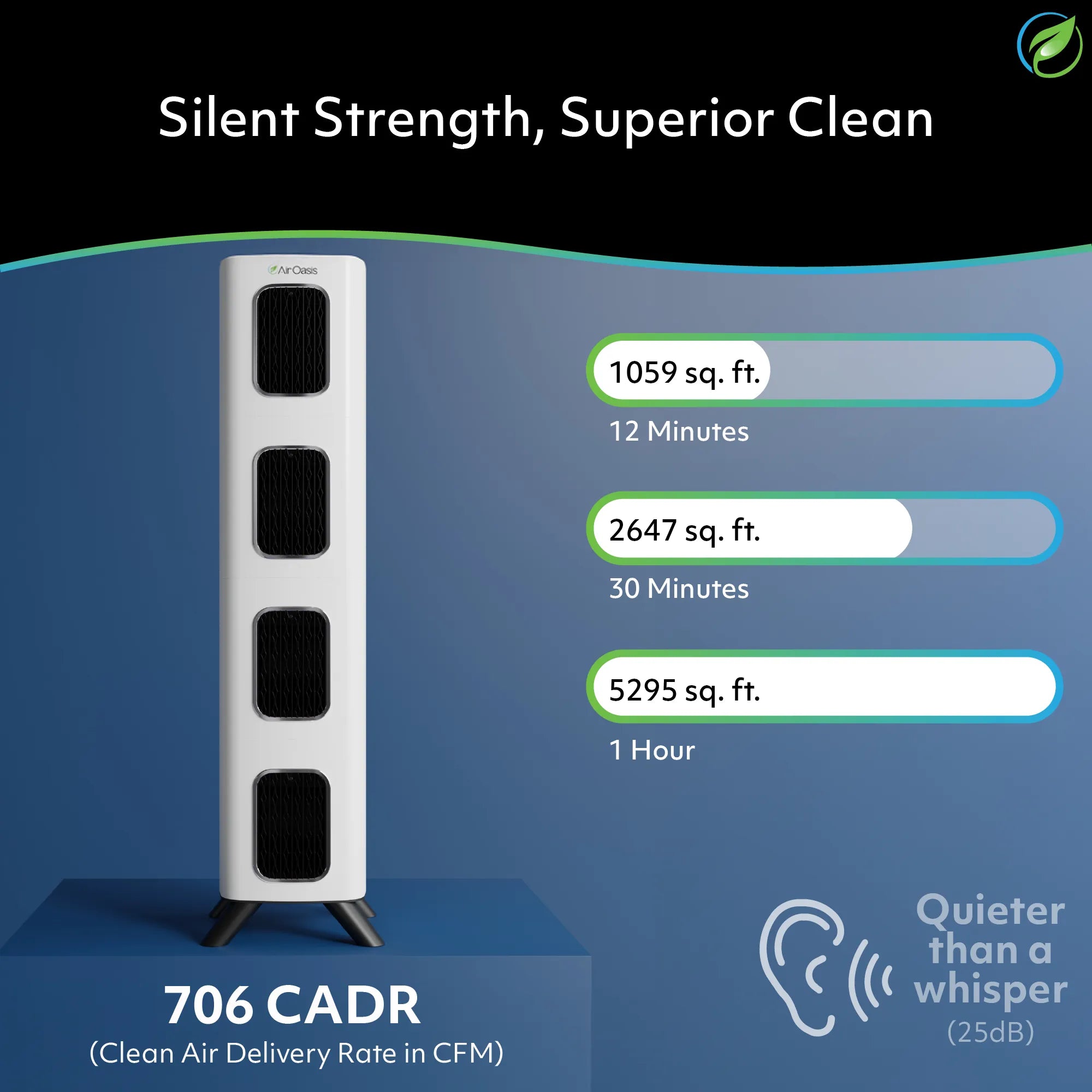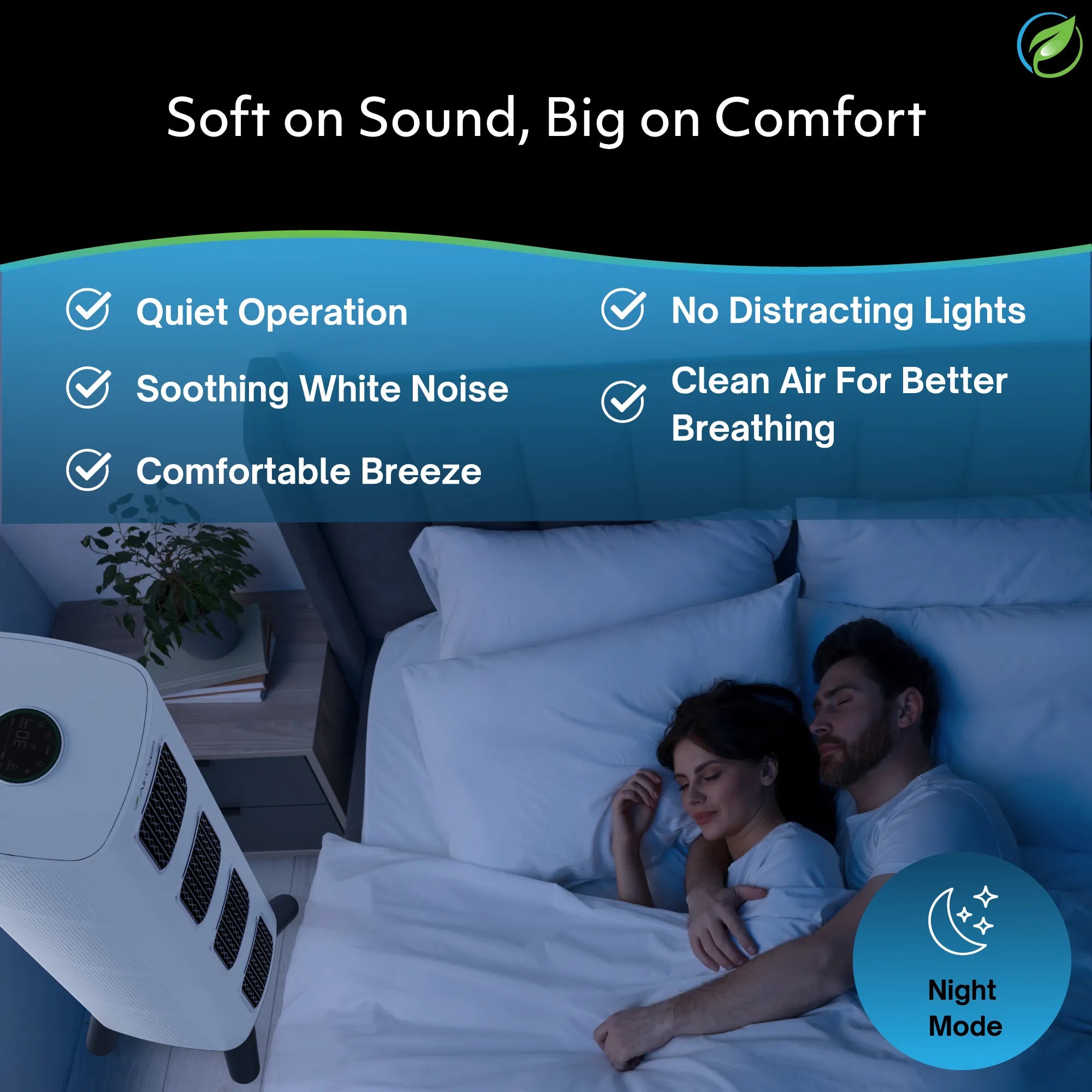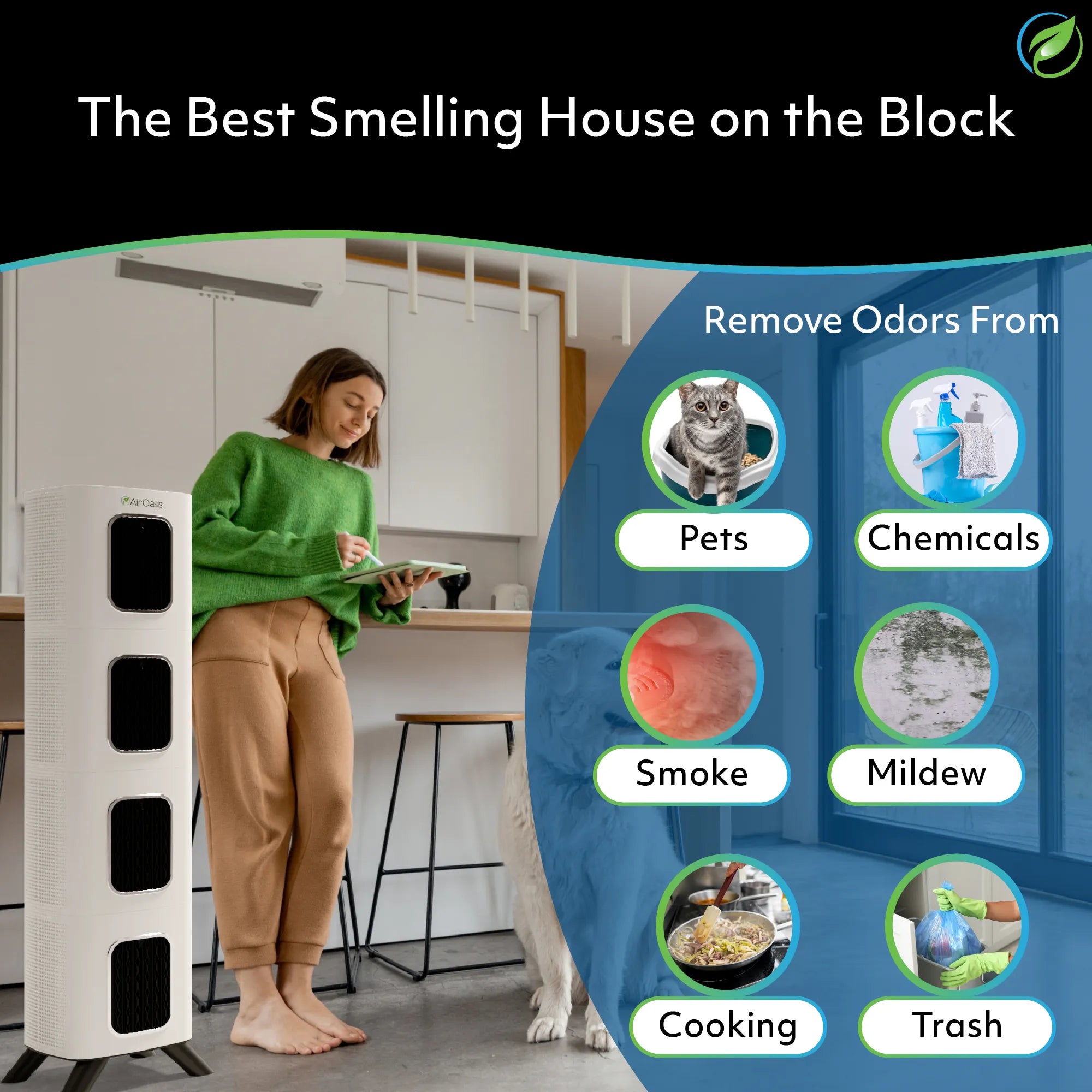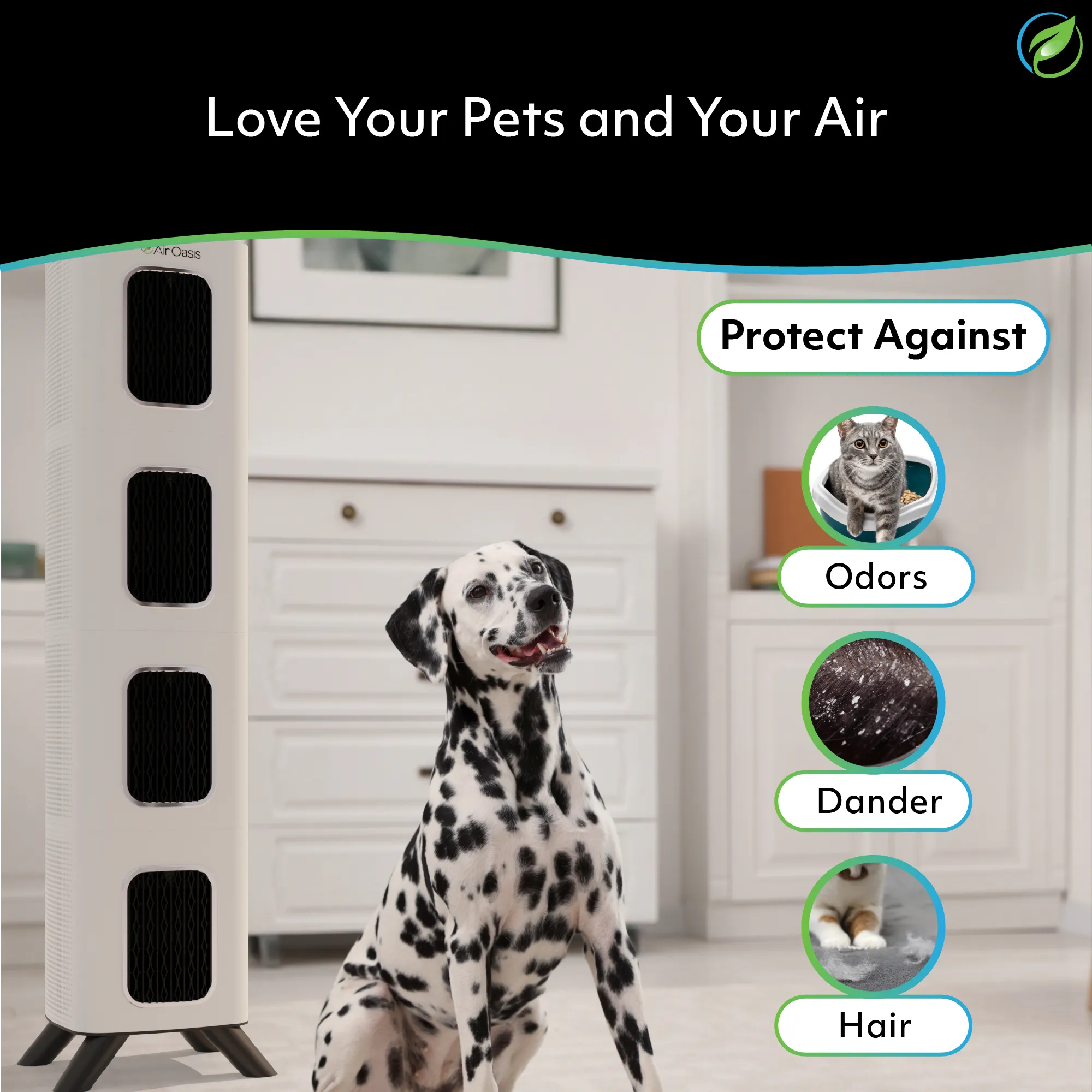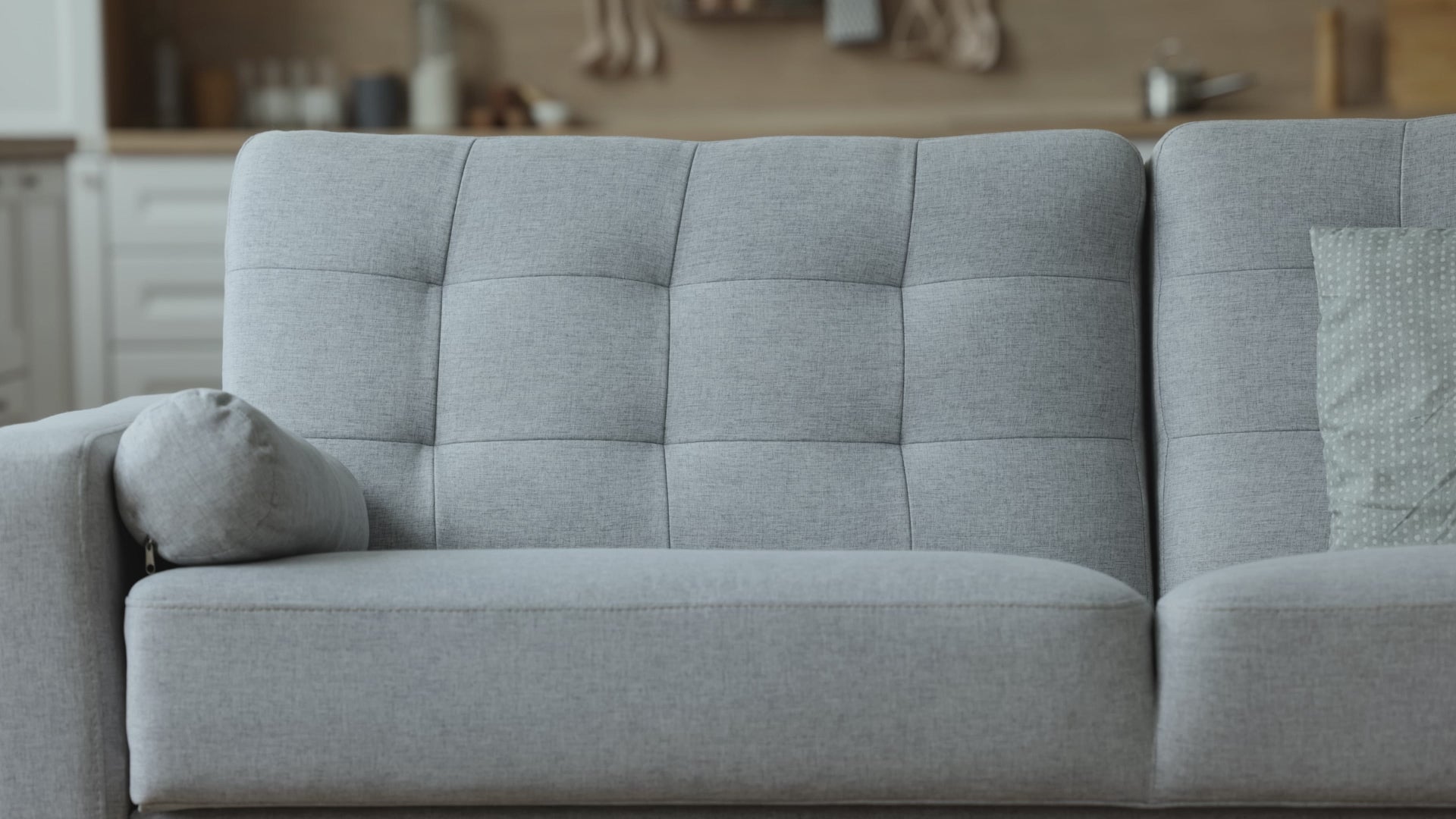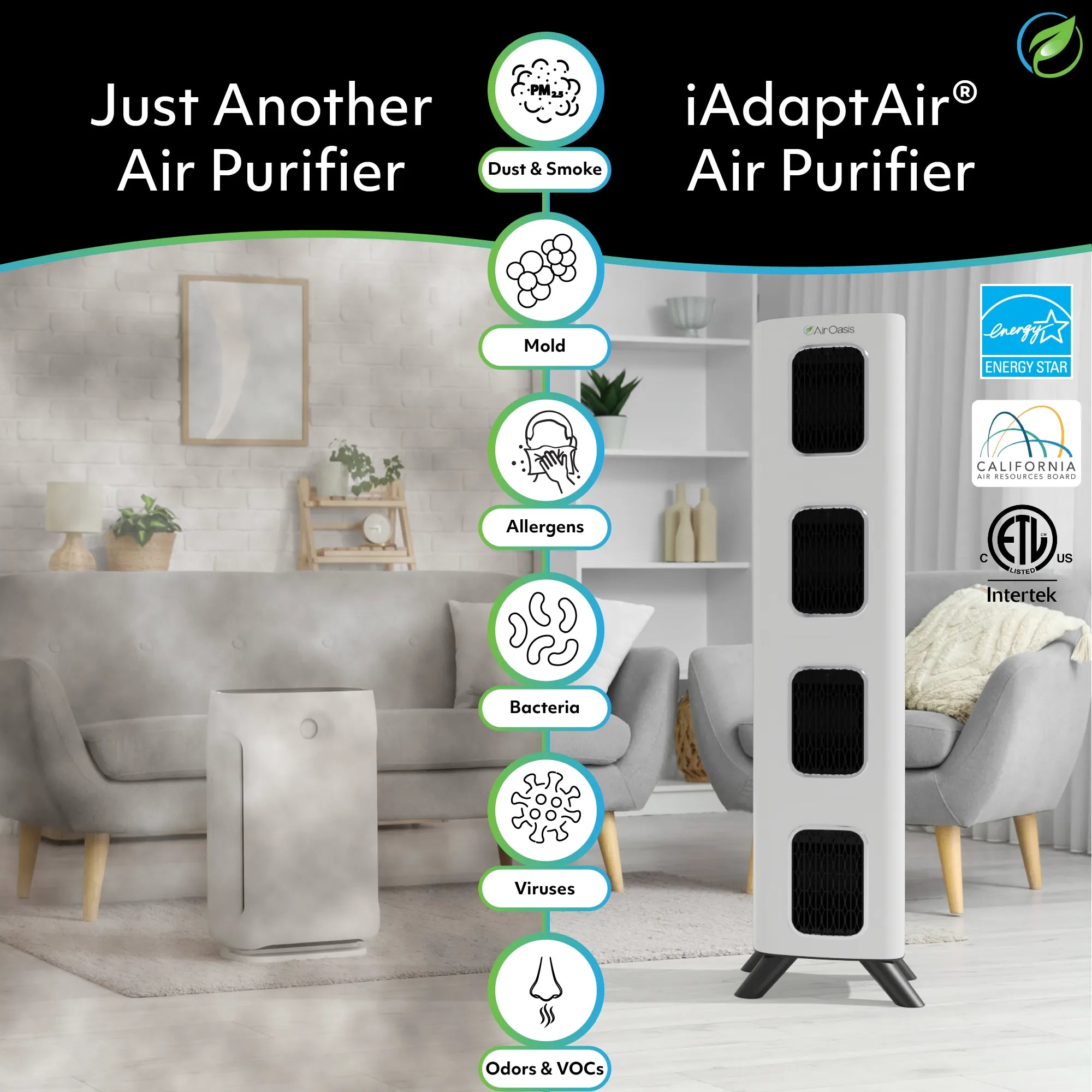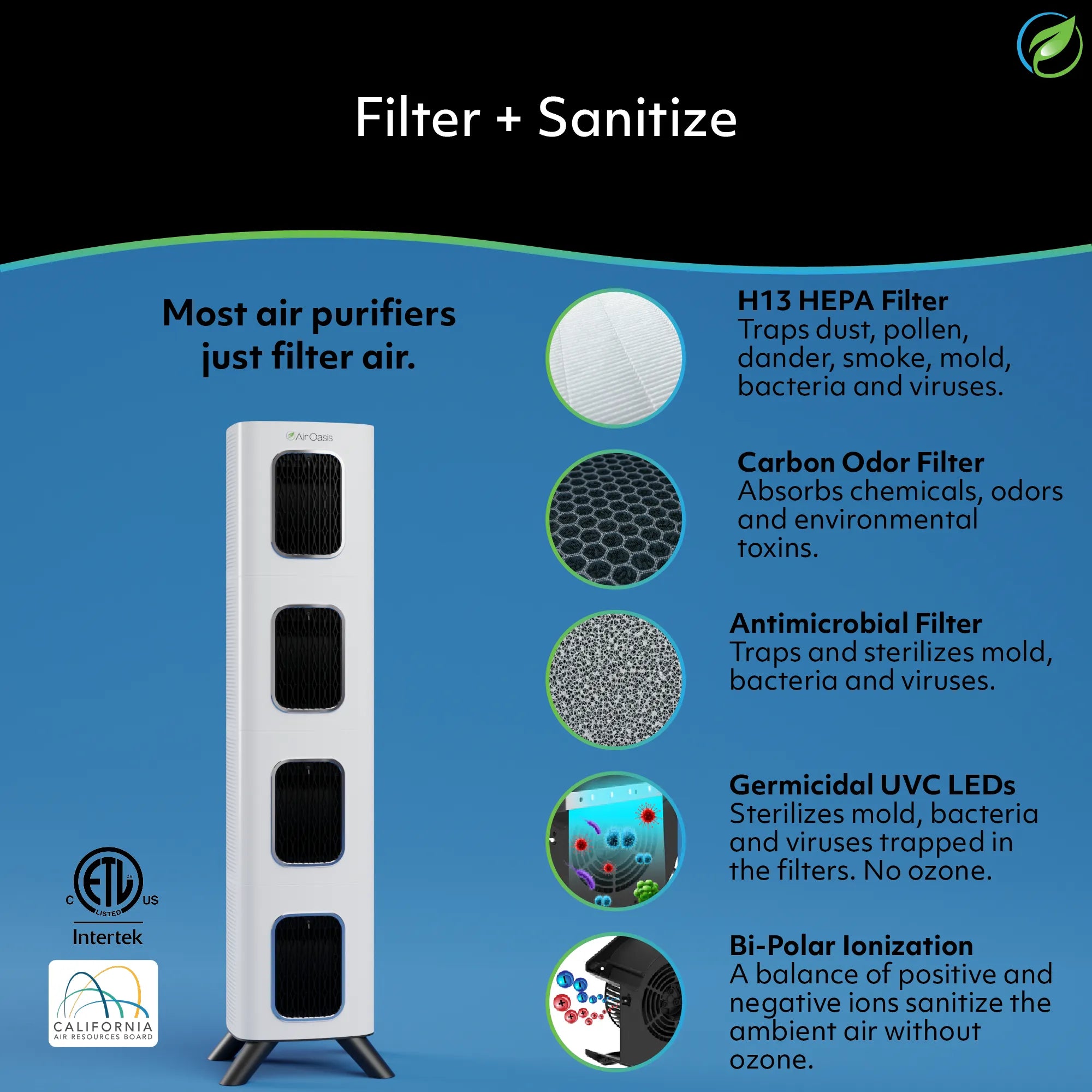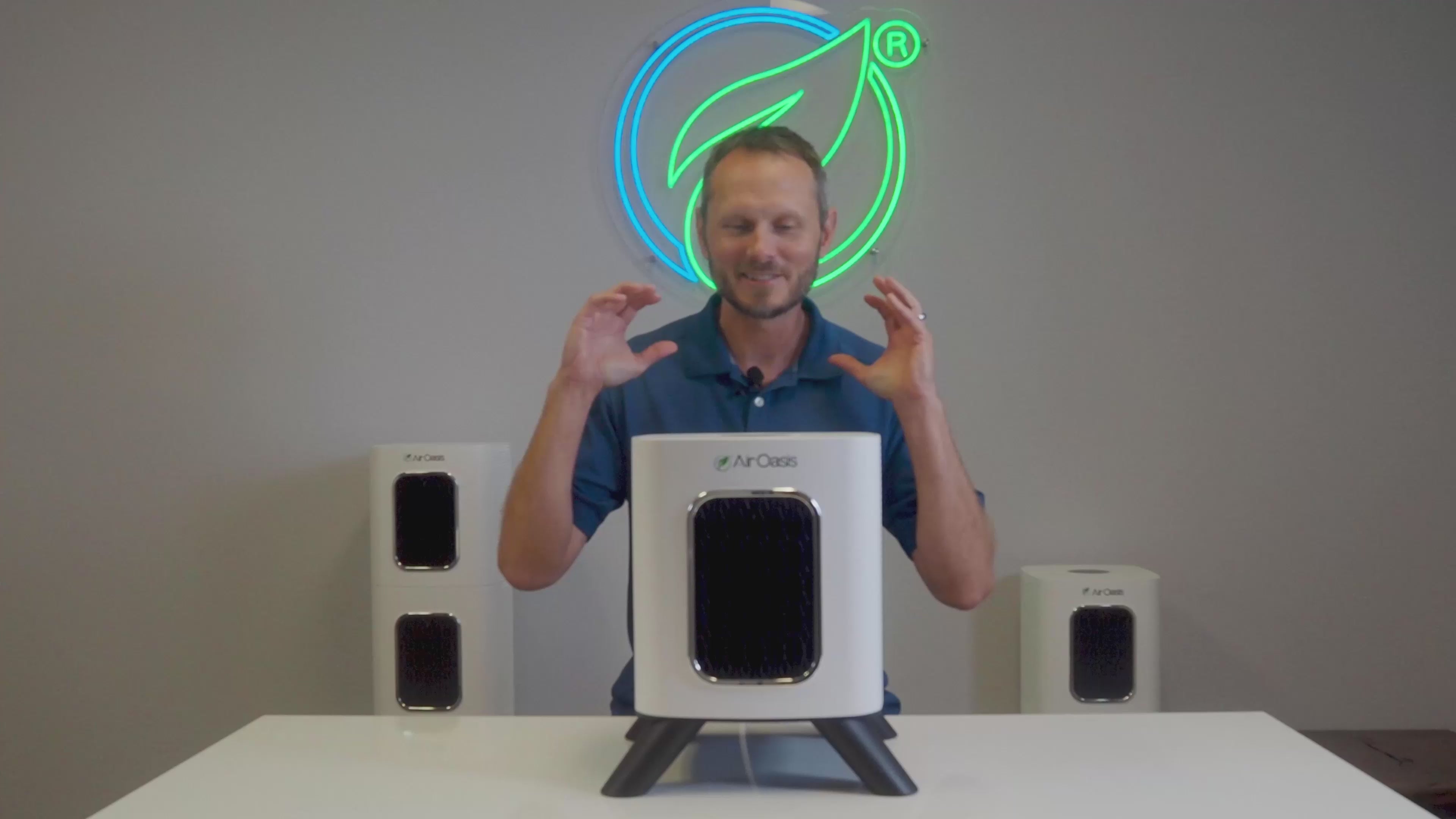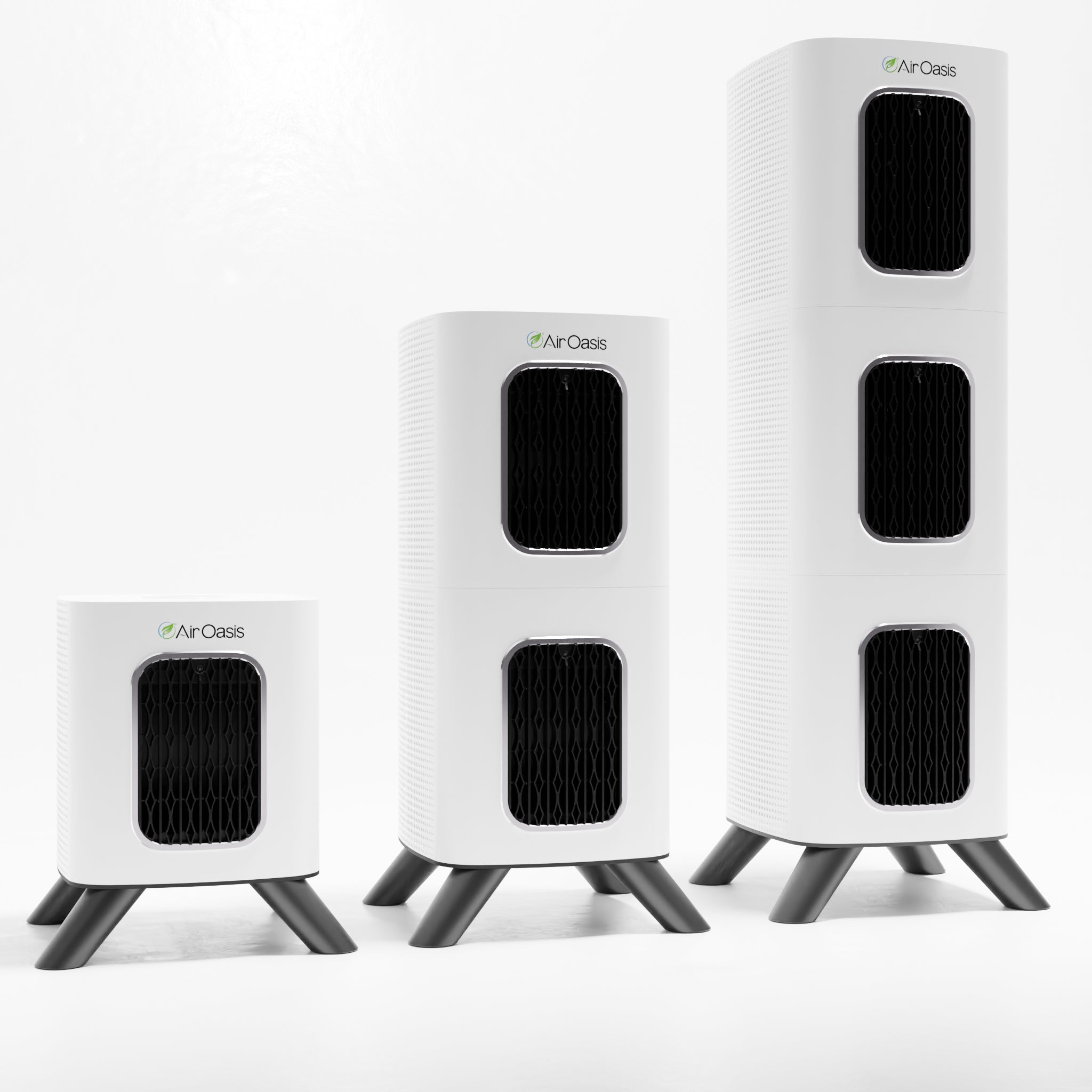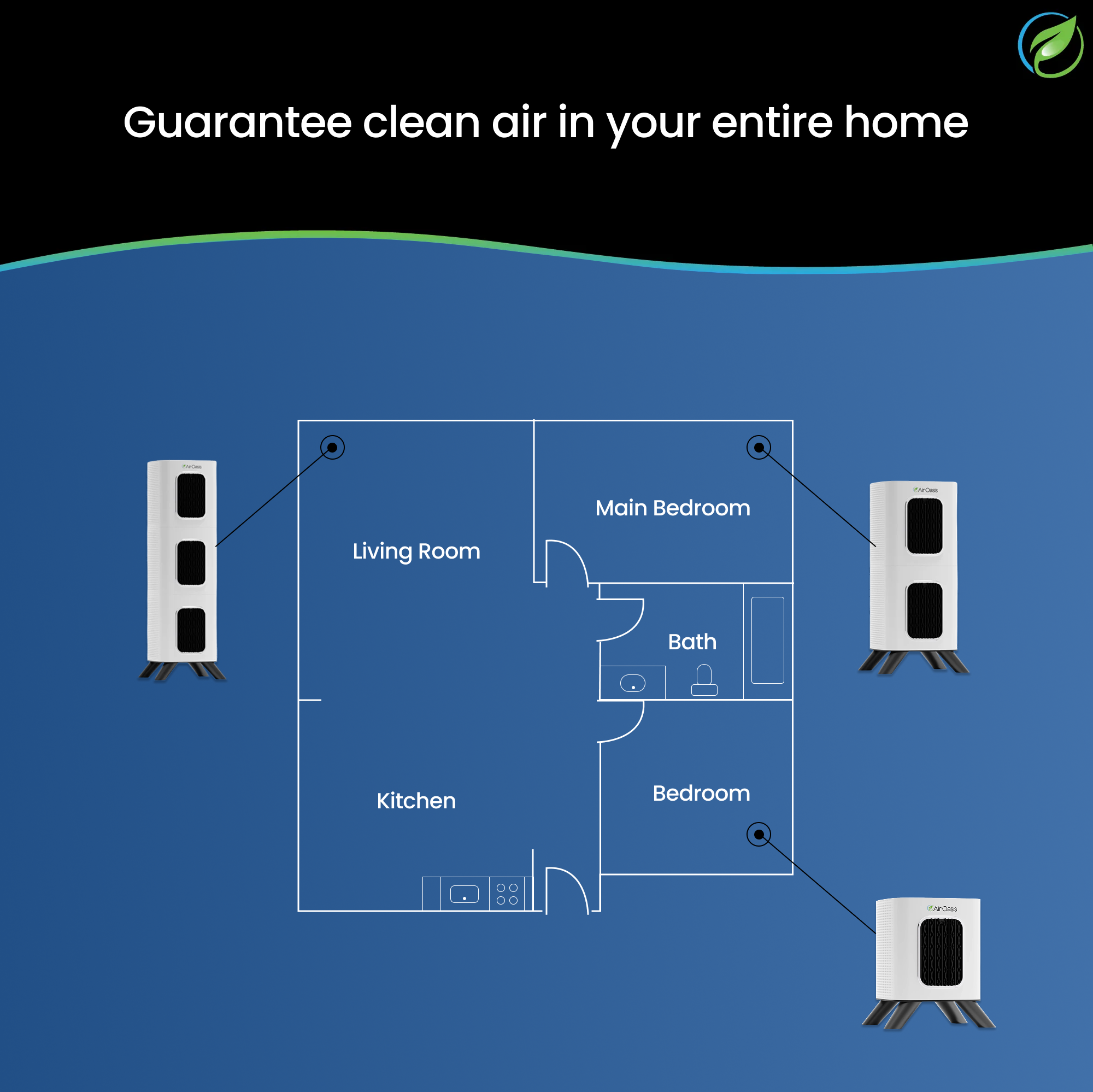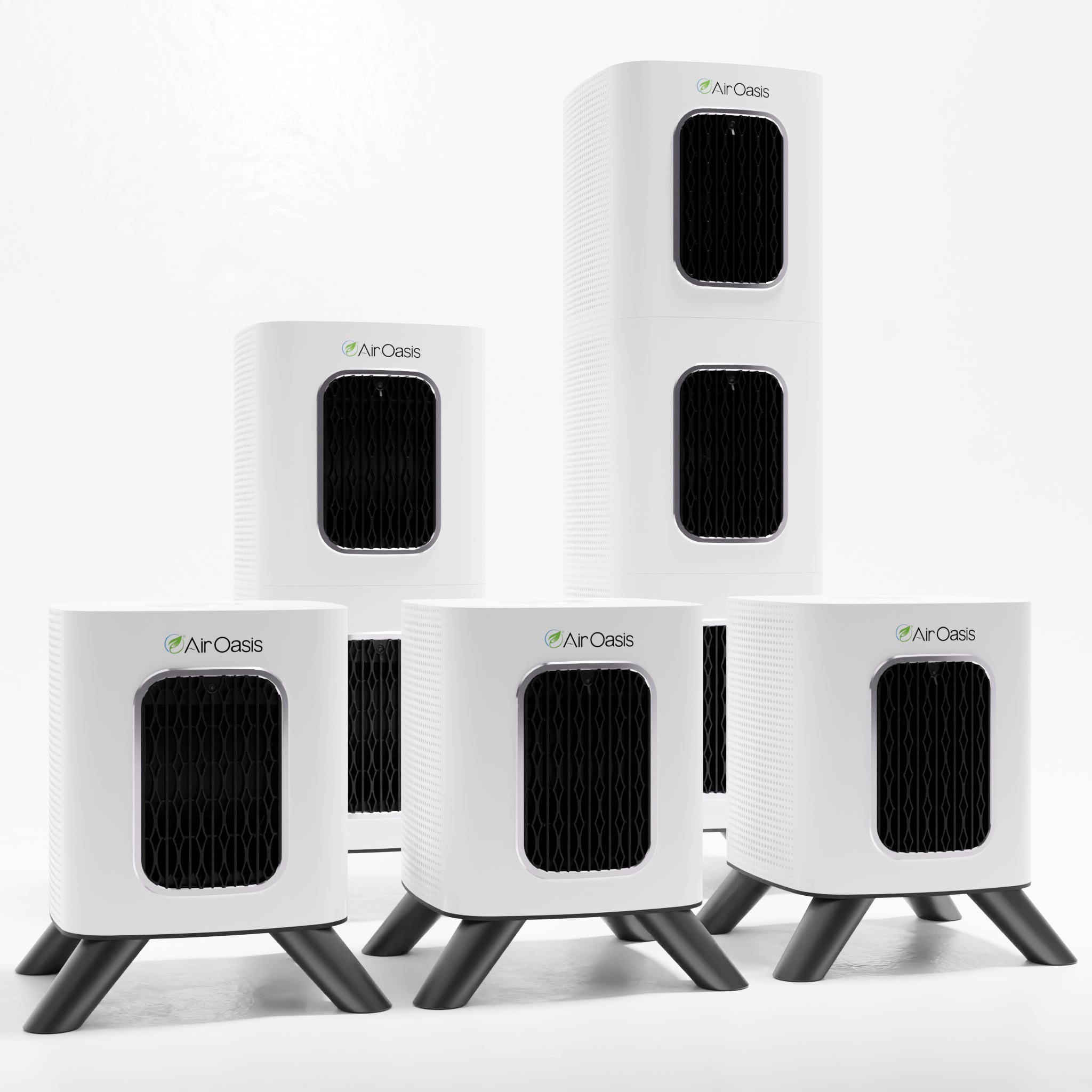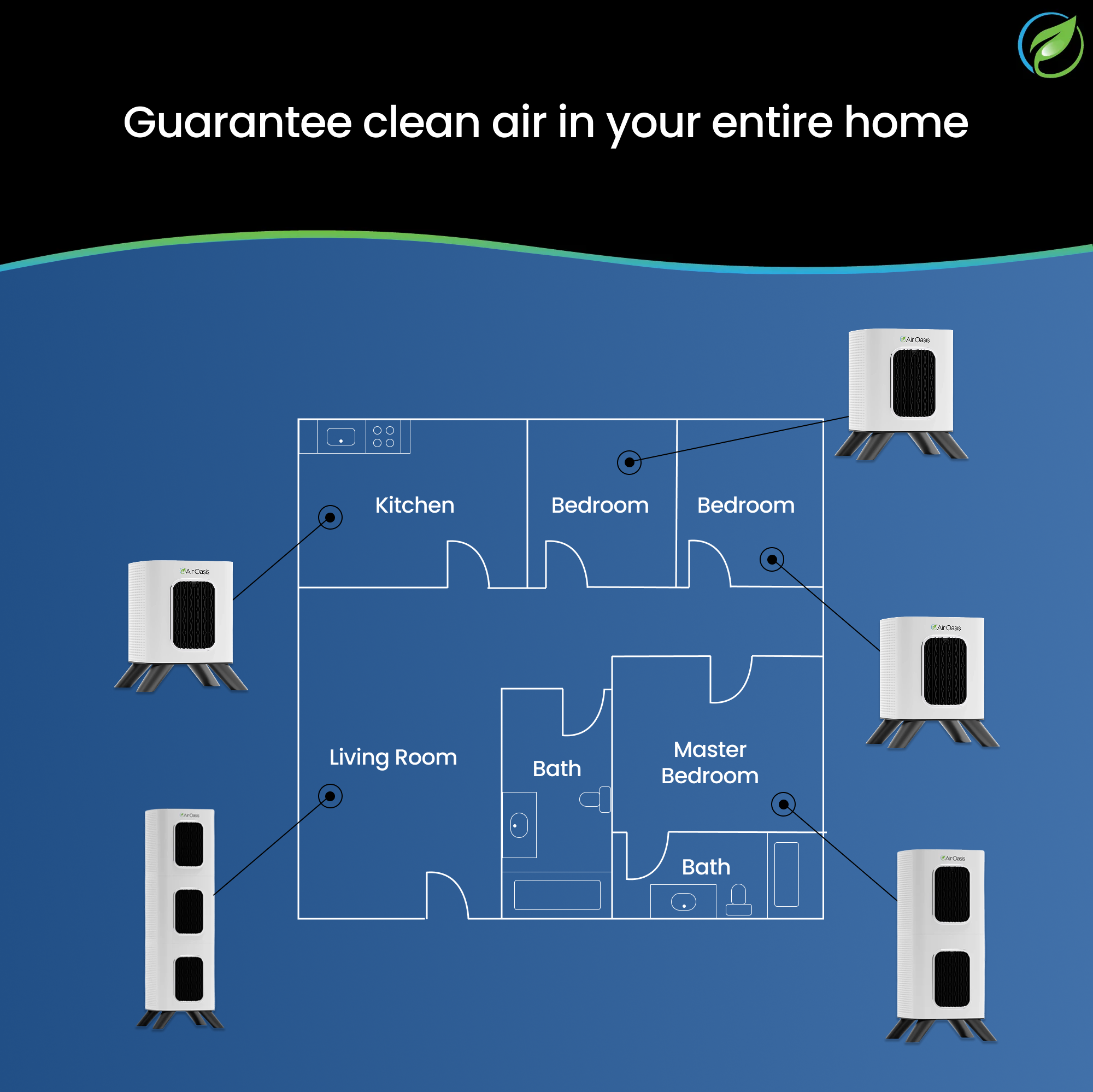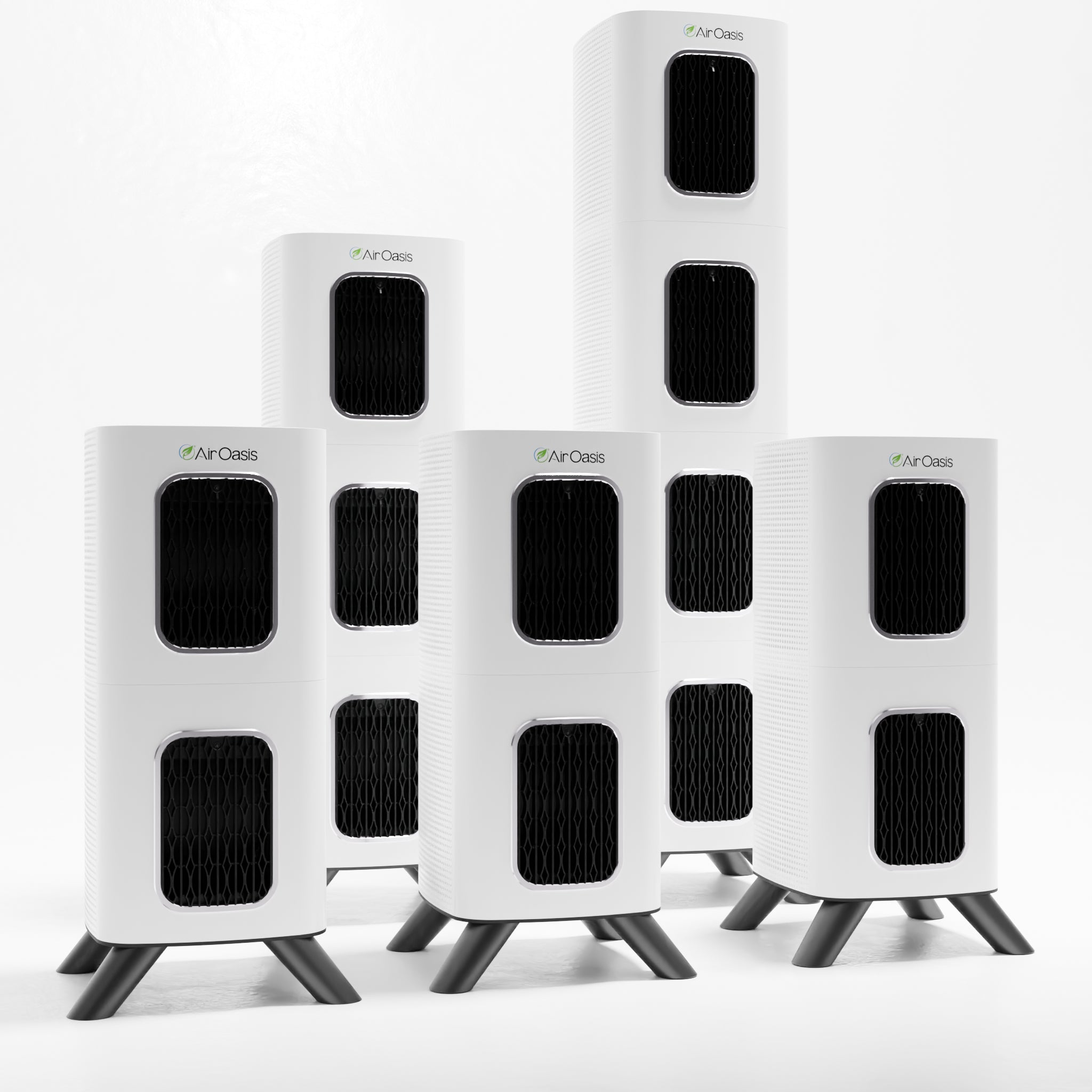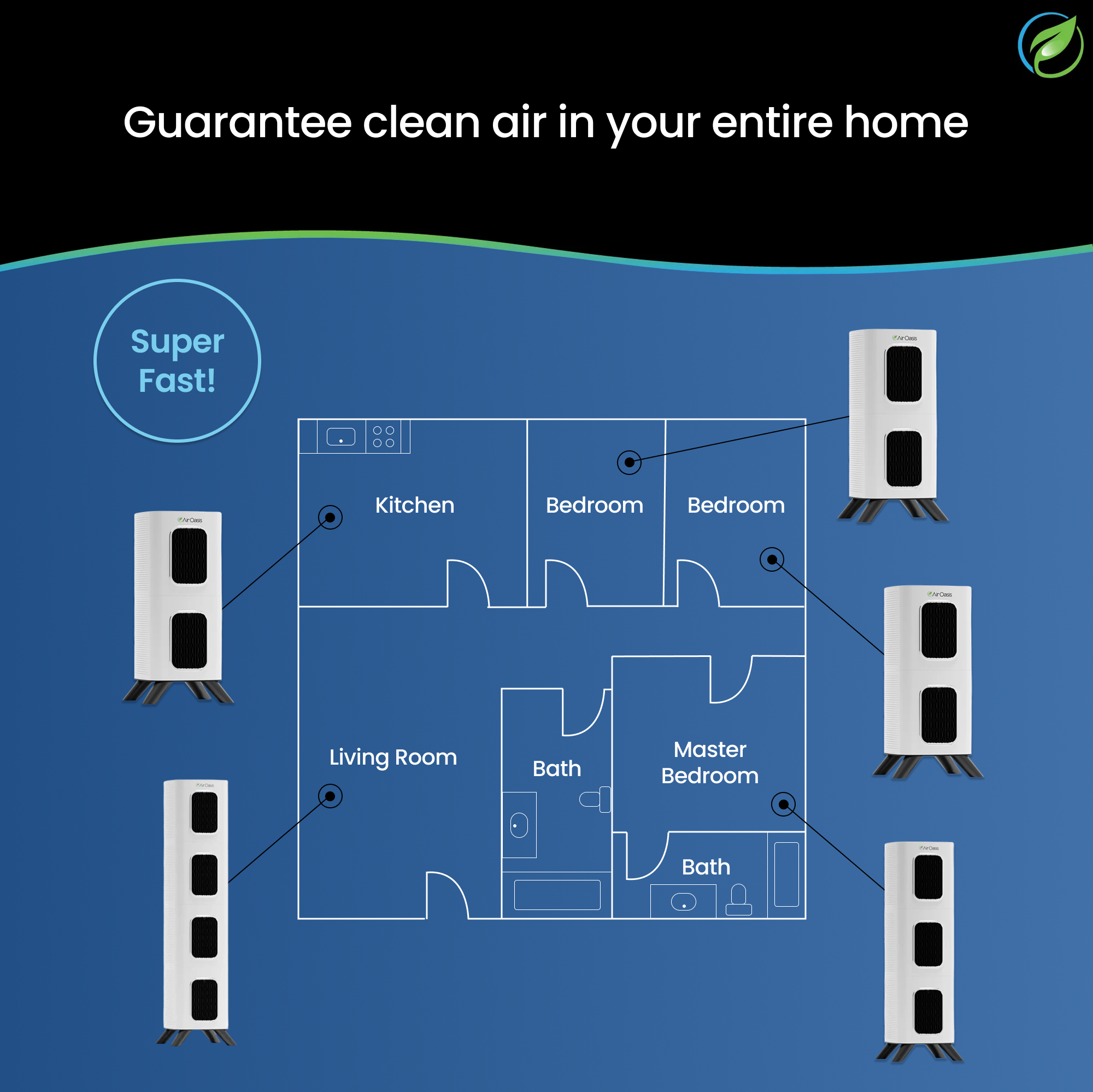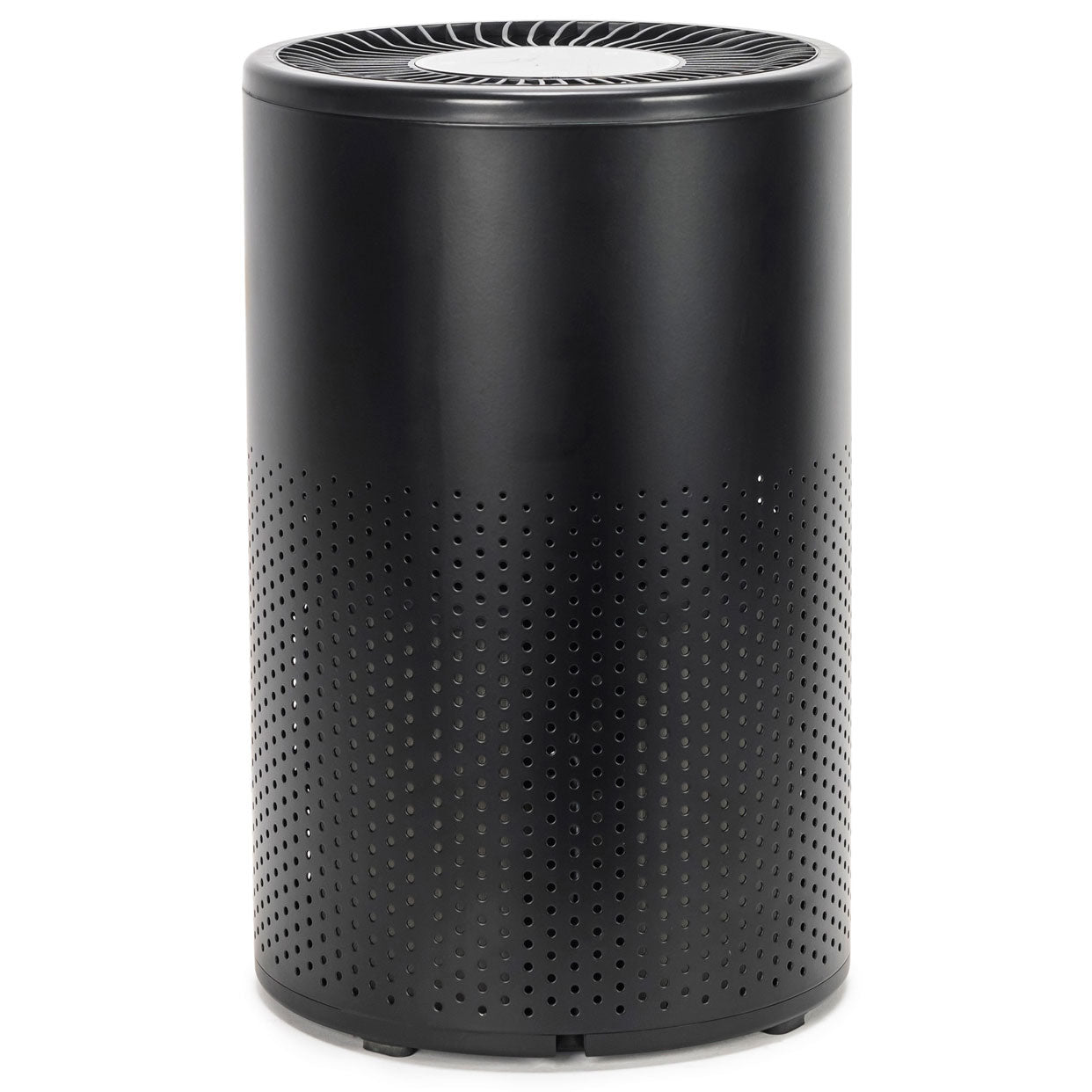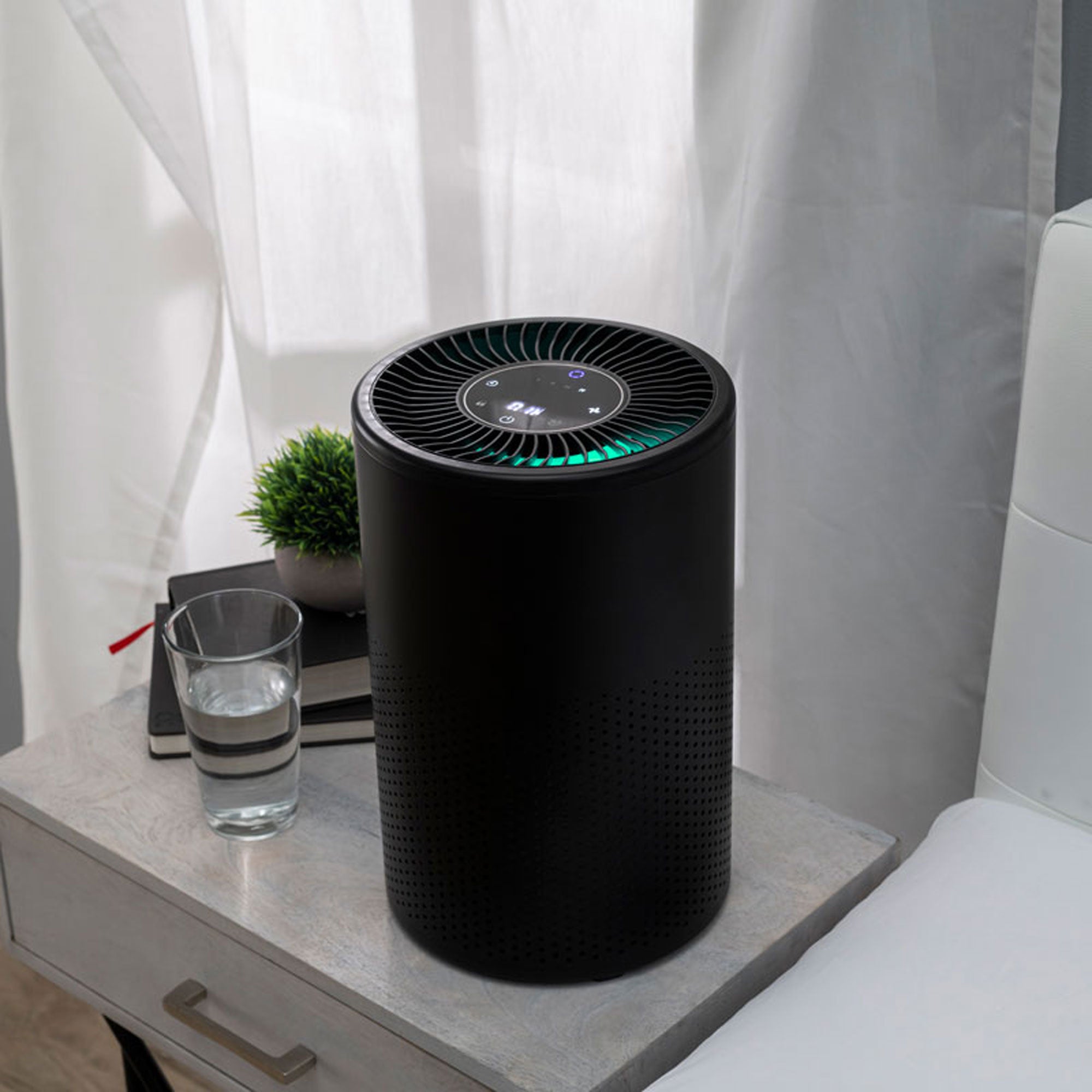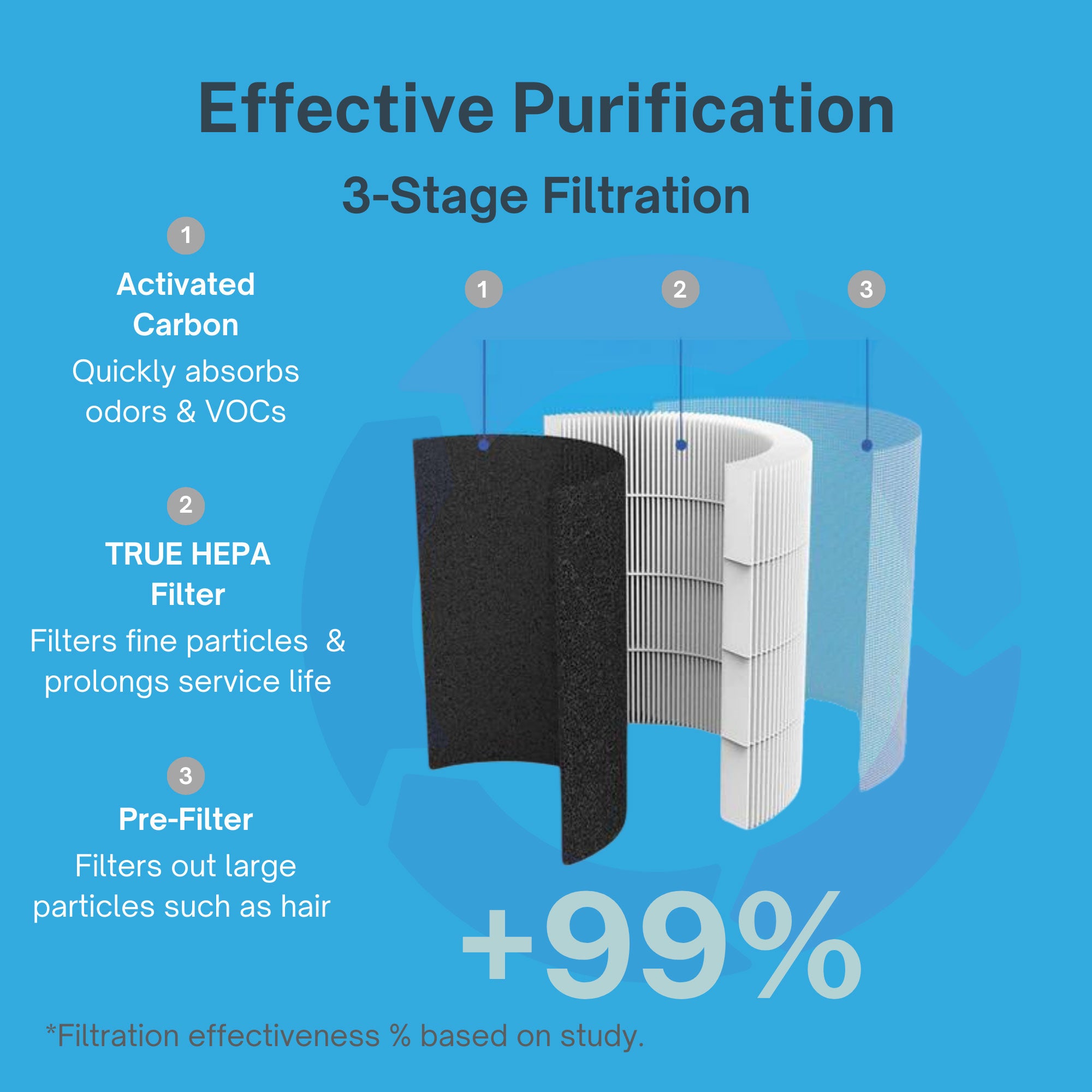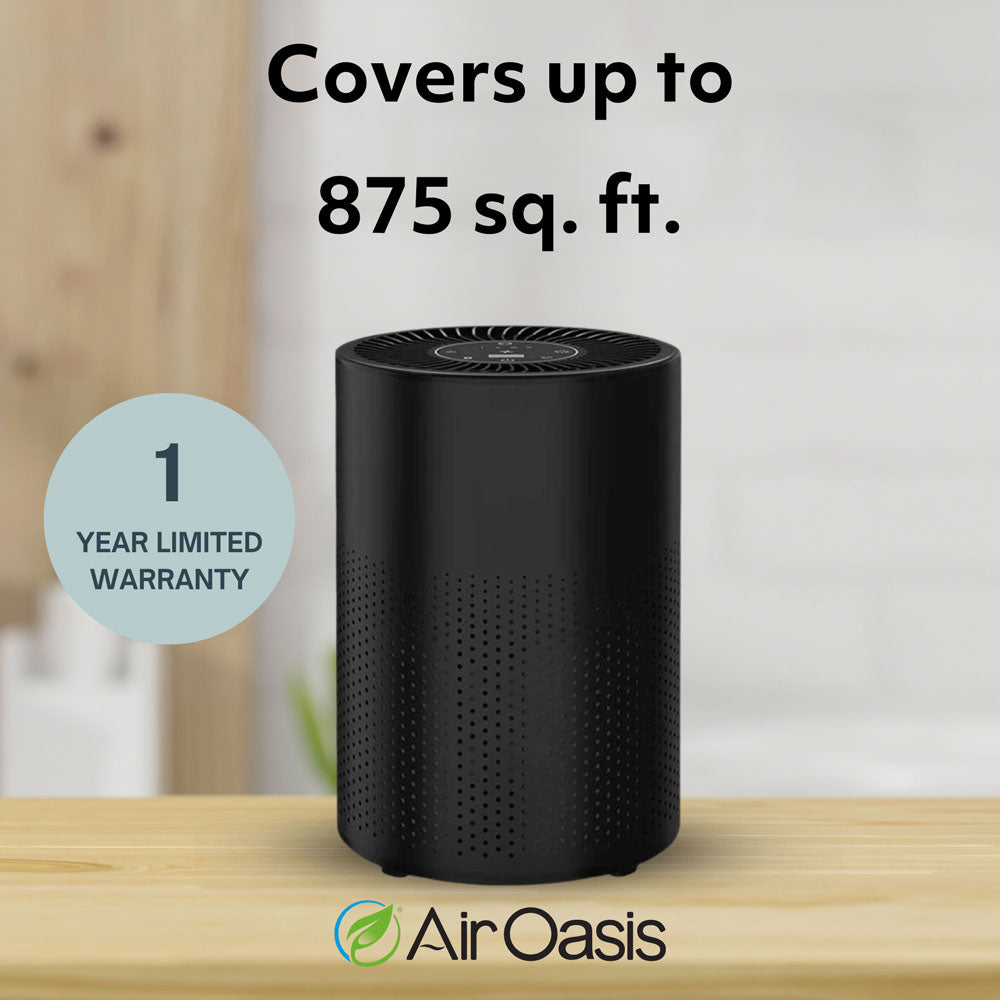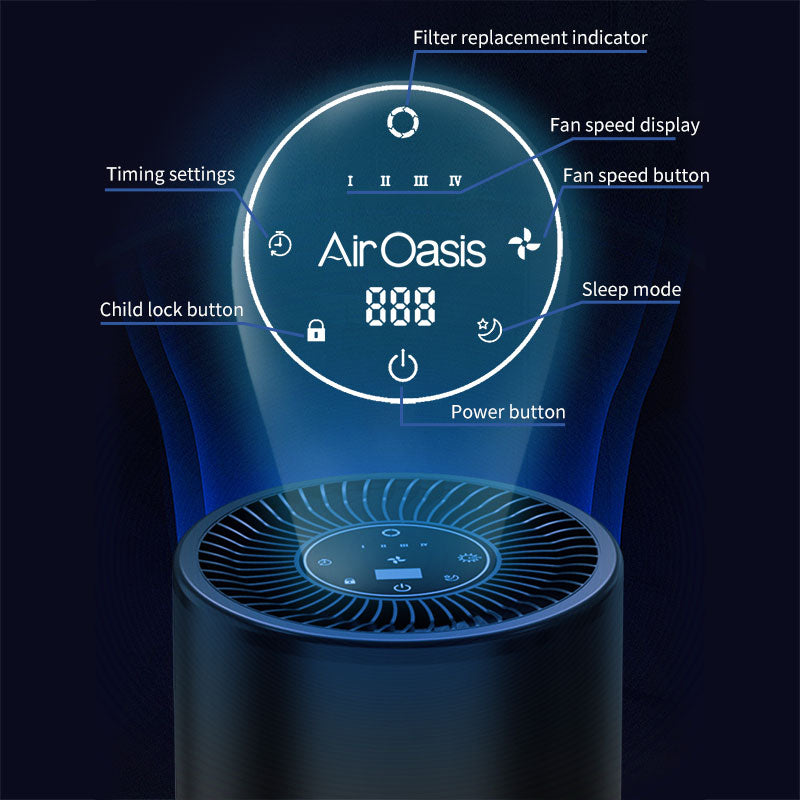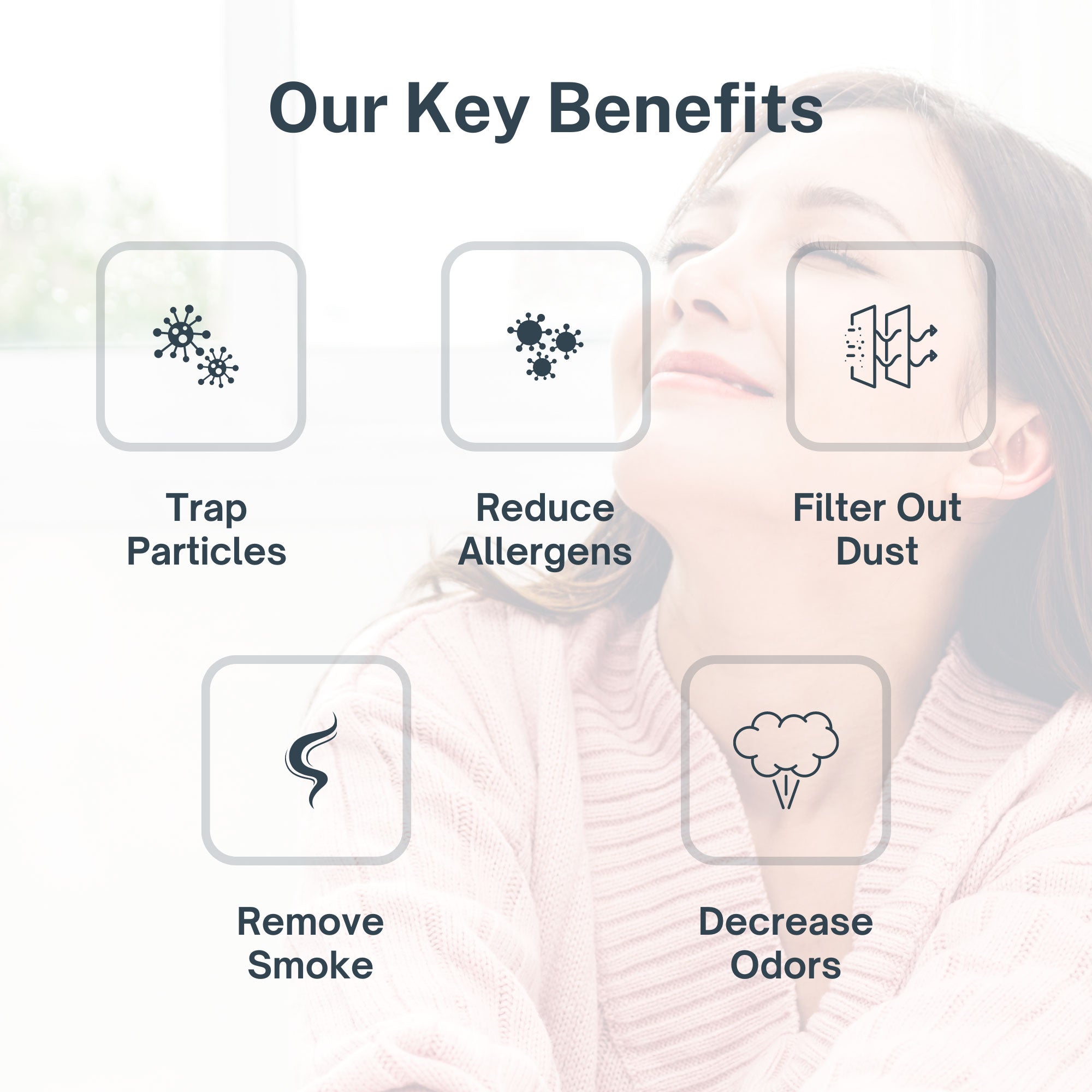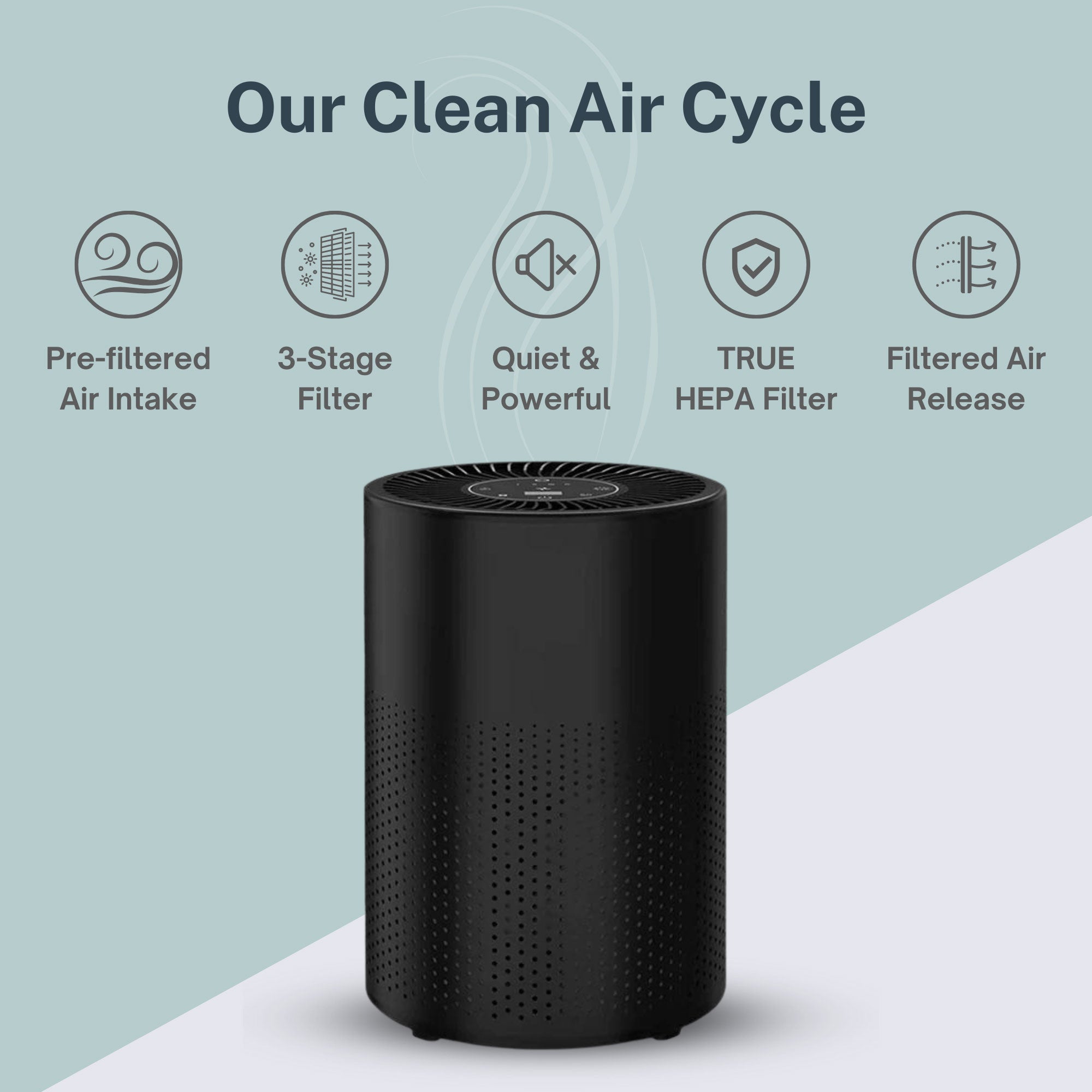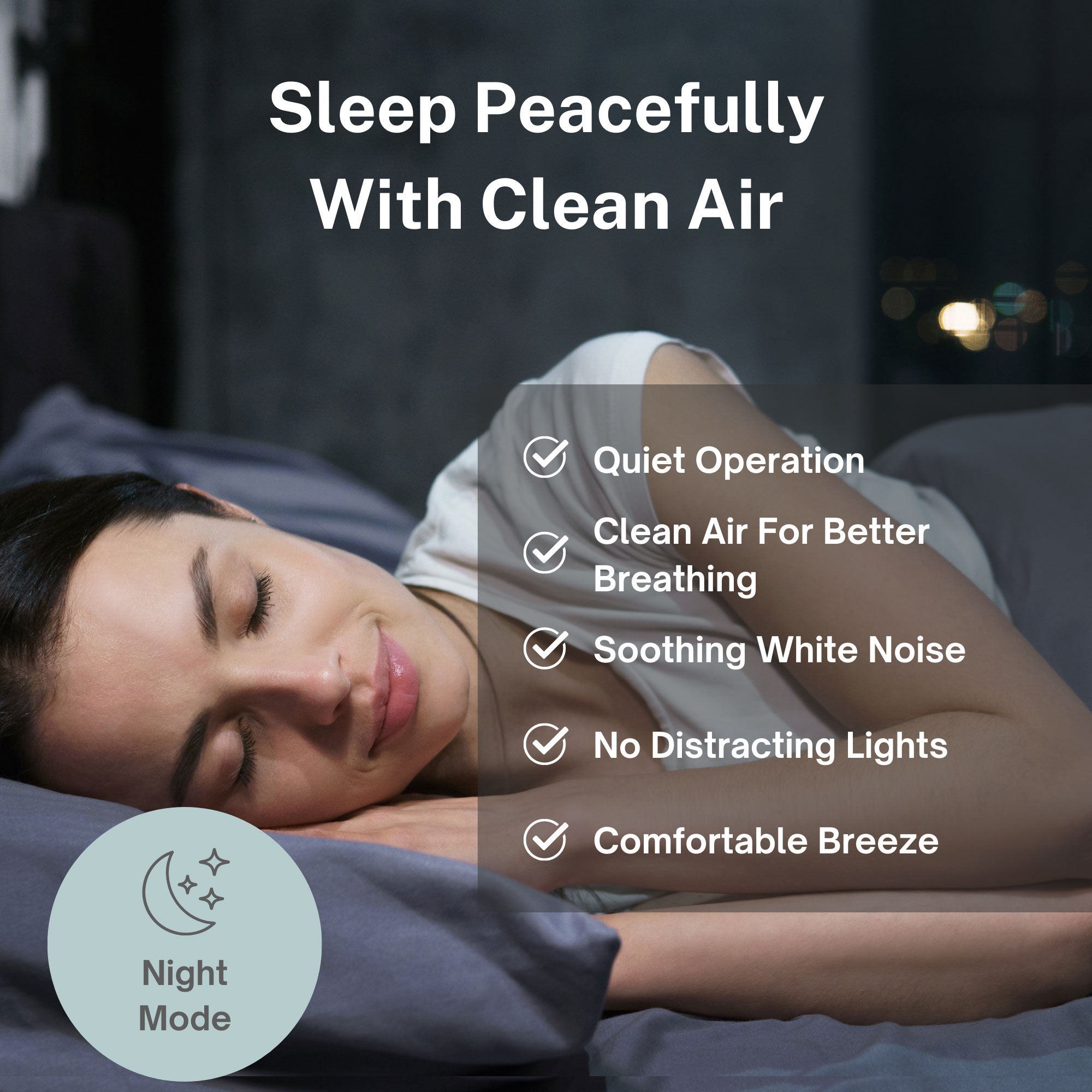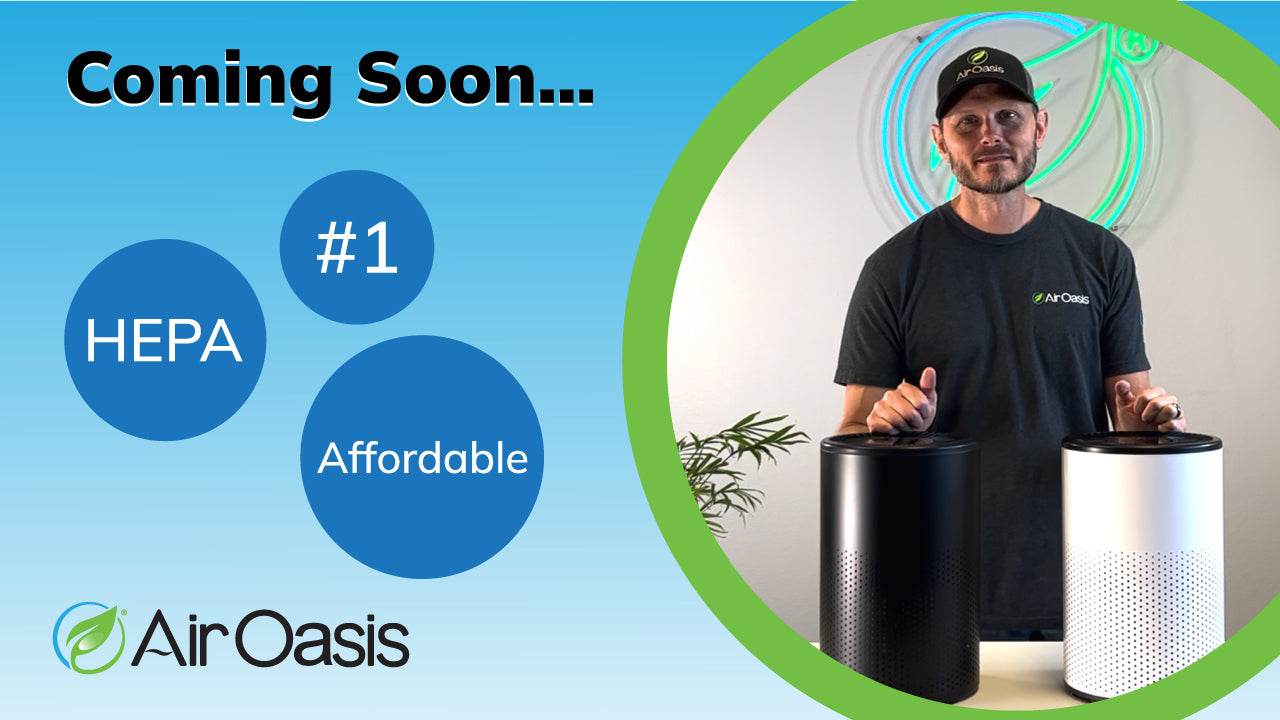Air purifiers clean the air. First, it’s important to understand why air purification, or getting cleaner air, even matters. This article will address things like average indoor air quality, what types of issues can be caused by poor indoor air quality, and how air purifiers actually operate to help you and your family breathe easier. Read on!
Air Oasis is a team uniquely qualified to answer this question. For years, we have been a consistent and reliable provider of best in class air purifiers. Compare our portable air purifiers here, and read on to learn what these beautifully designed air purifiers do.
Does Indoor Air Need to be Cleaned?
First, the discussion of what air purifiers do is irrelevant if indoor air is fine just as it is. In a few contexts, it may be. The Alps. The Himalayas. Super rural areas with few to no natural disasters (including wildfires, which are very detrimental to air quality). But these are not densely populated areas, so it’s unlikely you are investigating air purifiers if you live there.
What’s more likely is that you live in a standard suburban or urban environment. There are so many components that contribute to air quality, and one of the first things you should realize is that outdoor air quality impacts indoor air quality. Yes, your home is sealed and yes, your HVAC and furnace both have filters. But this is almost no defense against the reality that your air circulates air from outdoors, and most of what is contained in that air comes inside.
So, how do you measure indoor air quality to know if an air purifier is something you need? One way you may be tipped off is if your family regularly suffers from symptoms of poor indoor air quality, which include allergies, irritations, etc. Keep in mind, if your indoor air is bad because of something like black mold, it’s absolutely grounds for buying air purifiers, but also important to get to the root cause.
Let’s talk more about how to analyze the air inside your home or office.
What’s in the Air?
Have you ever wondered what’s in the air you breathe? Then it will interest you to know that all of these elements are in the air:
Particulate matter (PM) — Drops of liquid and solids are always suspended in the air. These can include contaminants — pollen, soot, smoke, dust — and come in many different shapes and sizes. It’s part of why multistage air filtration (more in a minute) is so important.
Volatile organic compounds (VOCs) — VOCs are a big culprit for poor indoor air quality, although they’re found both outdoors and indoors. A lot of times, you may be able to smell a VOC, so think along the lines of disinfectants, air fresheners, chemicals, even paint fumes or other cleaners.
Gasses — Some emissions may fit in one of the above categories but also be discussed as a “gas” of some kind. This includes gasses you can and can’t smell, and of course it’s important to measure these and understand what you’re inhaling.
Some of these components vary considerably depending on where you live. Pollen count, rain, proximity to plants and animals, proximity to chemical processes or plants, and a myriad of other factors are going to determine your area’s outdoor air quality.
Outdoor air pollution has a huge impact on people's lives. According to a study by the Global Burden of Disease, 4.51 million deaths in 2019 were attributable to outdoor air quality. It’s certainly nothing to be taken lightly, and a few additional factors could impact the quality of the air in the room you’re sitting in right now.
What Types of Buildings Have the Worst Quality Air?
Regulations around HVAC/air conditioning and heating systems have improved in many regions, which has reduced what is known as “sick building syndrome.” Now, most states require air circulating systems to pull in outdoor air and process it to a certain standard. Even so, there are several public places that, either by the nature of their construction or what occurs inside, have notoriously bad indoor air quality.
These include:
Shopping malls — Anywhere that is densely crowded and has a lot of people flowing in and out will naturally have threats to indoor air quality.
Office buildings — This is a density issue but also can be related to the age of the building, layers of paint, and the fact that people spend many hours in a confined space.
School classrooms — We sell air purifiers to private schools and educational institutions because we know this to be true: schools often have poor indoor air quality. Old buildings, tons of teachers and students, industrial cleaning solutions: it’s a perfect storm.
Medical offices — Doctor’s offices and dentist’s offices both have challenges to maintaining clean air. Sick patients travel in and out, certain procedures naturally emit chemicals or require the use of chemicals, hygiene standards demand strong cleaners, etc. We sell doctor recommended air purifiers directly to medical practices.
Apartment buildings — Shared walls, fewer windows, and shared ventilation systems all typify multifamily buildings, and make it harder to maintain clean air.
Restaurants and bars — Anywhere people smoke automatically has poorer air quality. Add to that open flames, always-on grills, and other kitchen fumes, and restaurants can be a place where the air is fairly polluted.
These are places almost all of us have to go (or want to go) on a regular basis.
The question on your mind now may be: Am I at risk?
The Environmental Protection Agency’s Guide to Indoor Air has a succinct summary of the problems posed by indoor air quality: “While pollutant levels from individual sources may not pose a significant health risk by themselves, most homes have more than one source that contributes to indoor air pollution. There can be a serious risk from the cumulative effects of these sources.”
The good news is that organizations like ours have worked for decades to refine air purifiers. So, when it comes to what air purifiers do for air quality, the answer is: a lot.
What Can Air Purifiers Do for Poor Air Quality?
Air purifiers are a key line of defense against poor indoor air quality. By having good portable air purifiers in your home, school, office, or other facility, you are instantly improving the quality of air. Multistage air purifiers use multiple types of technology to take care of particulate matter, volatile organic compounds, mold spores, and gasses. Leveraging the power of UV and bi-polarⓇ ionization, air purifiers can even deactivate viruses like COVID-19. Sounds awesome. Is awesome. Here’s how air purifiers work.
How do Air Purifiers Work?
There are basically two ways air purifiers can function to clean the air:
- Using forced air processes to circulate indoor air. The portable air purifier itself will be equipped with HEPA and/or additional types of air purifier filters. These filters physically capture all of the components swirling about in the air. As it runs, it does this continuously, effectively cleaning the air.
- Using an extremely high-tech process called bi-polarⓇ ionization. Ionic air purifiers send out a blanket of charged particles. In a chemical interaction, these particles join with other air particles in the air. When this happens, all of the suspended particles are weighted down. They fall to the ground so you don’t breathe them in anymore.
Both ways air purifiers work are effective for improving air quality.
What Types of Technology do Air Purifiers Use?
The “how” is compelling and important to understand as you shop for air purifiers online. But you may still be wondering: “Do air purifiers work?” Companies like ours have also asked that question, and not just relied on our own acumen to find answers.
At Air Oasis, we partner with third-party research and testing companies to ensure there is no bias or skewed results in our evaluation of air purifier technology. The bi-polarⓇ ionization process delineated above, for instance, is a technology adapted from NASA and has been rigorously tested.
HEPA filters have been around since the 1940s and were first developed to contain airborne radioactive contaminants. The finely woven mesh made its way from military and government use into everyday homes because it was the right technology to get rid of even the finest particles in the air (0.1 microns).
The air purification technology itself is impressive and 100% tested, and the goal of it all is to improve people’s health and well being.
What Do Air Purifiers Do For Health
Bad air quality isn’t just a vague or hypothetical unseen threat. It has real impacts in people’s lives everyday. From the EPA’s warning above to the everyday nuisance of congestion, irritation, and chronic concerns, it’s important to understand how an air purifier can improve health.
Here are some things we have personally experienced, and we thought they’d be best coming from our wonderful customers:
“I am 100% satisfied with this air purifier. I bought this one and the "middle" one. This one is for my lower level and the other one I use for my upper level. The air smells so fresh and clean. We have two cats, one long haired and my husband has allergies. This purifier does exactly what it is supposed to do and then some. I also noticed a significant reduction in the amount of dust that accumulates throughout the house, which is amazing! I hardly have to dust. Having these filters has been great especially with Covid. We just feel so much better and I truly credit these purifiers as the reason why we are staying healthy, along with basic handwashing, ofc.” Lisa A.
“I’ve had this in my living room for two years now and really notice the difference in the air quality.. well worth the purchase.” Anne B.
“I'm satisfied with the product!. The moldy smell is gone in my closet. The size is small so we can put it wherever you want. I'm very satisfied with the product.” Chika K.
“Air quality improved!!. Have noticed a real difference in air quality. Not coughing nearly as much!” Patricia P.
What Can Air Purifiers do… for You?
Ready to mitigate risk and remove contaminants from the air? At Air Oasis, every air purifier we send out has been thoughtfully designed, expertly manufactured, and is ready to improve the air in your home.
If you have any questions about which model is right for you, don’t be afraid to reach out to us directly. We recommend you start investigating with our most popular air purifier, the iAdaptAirⓇ HEPA.


